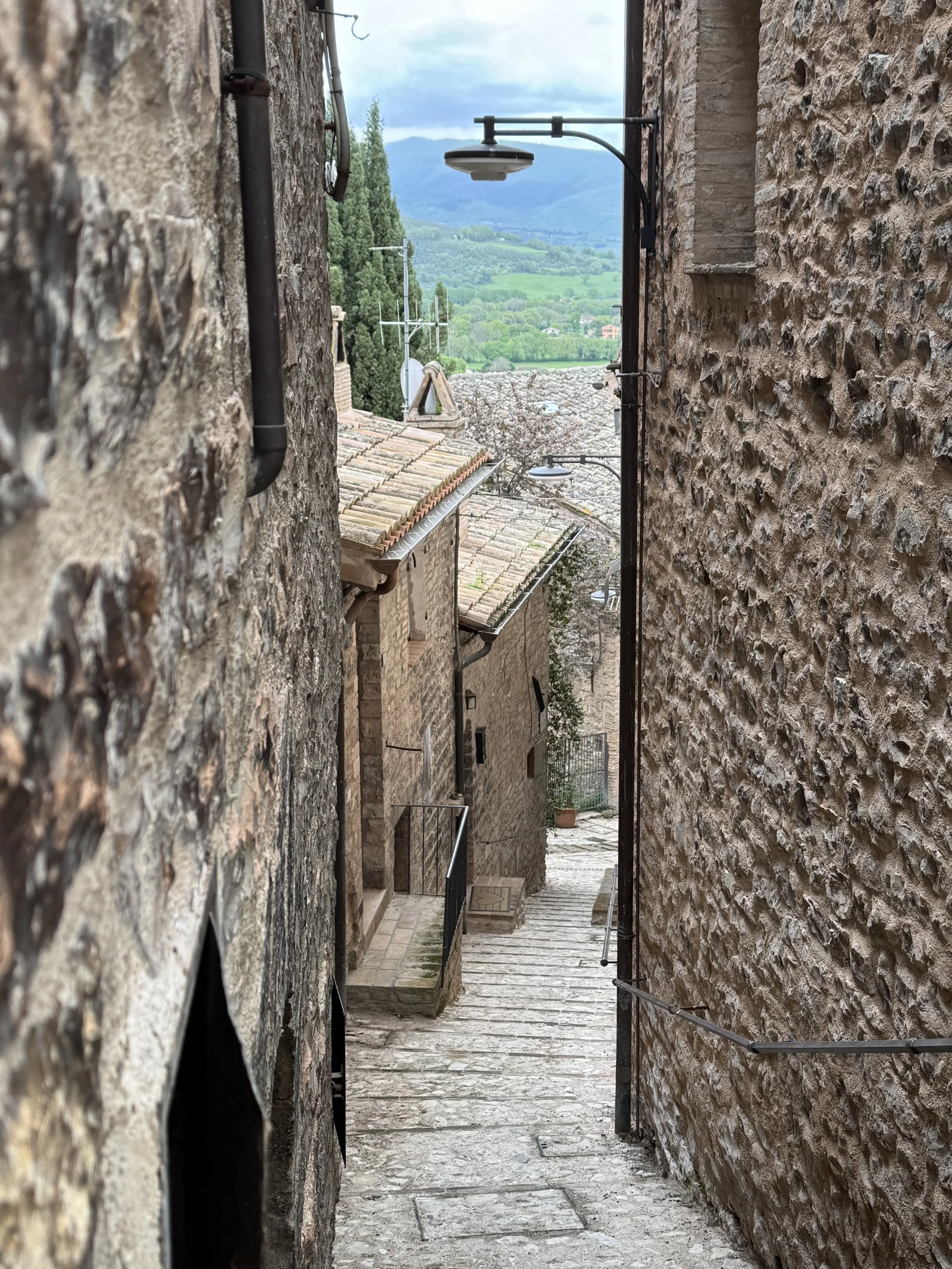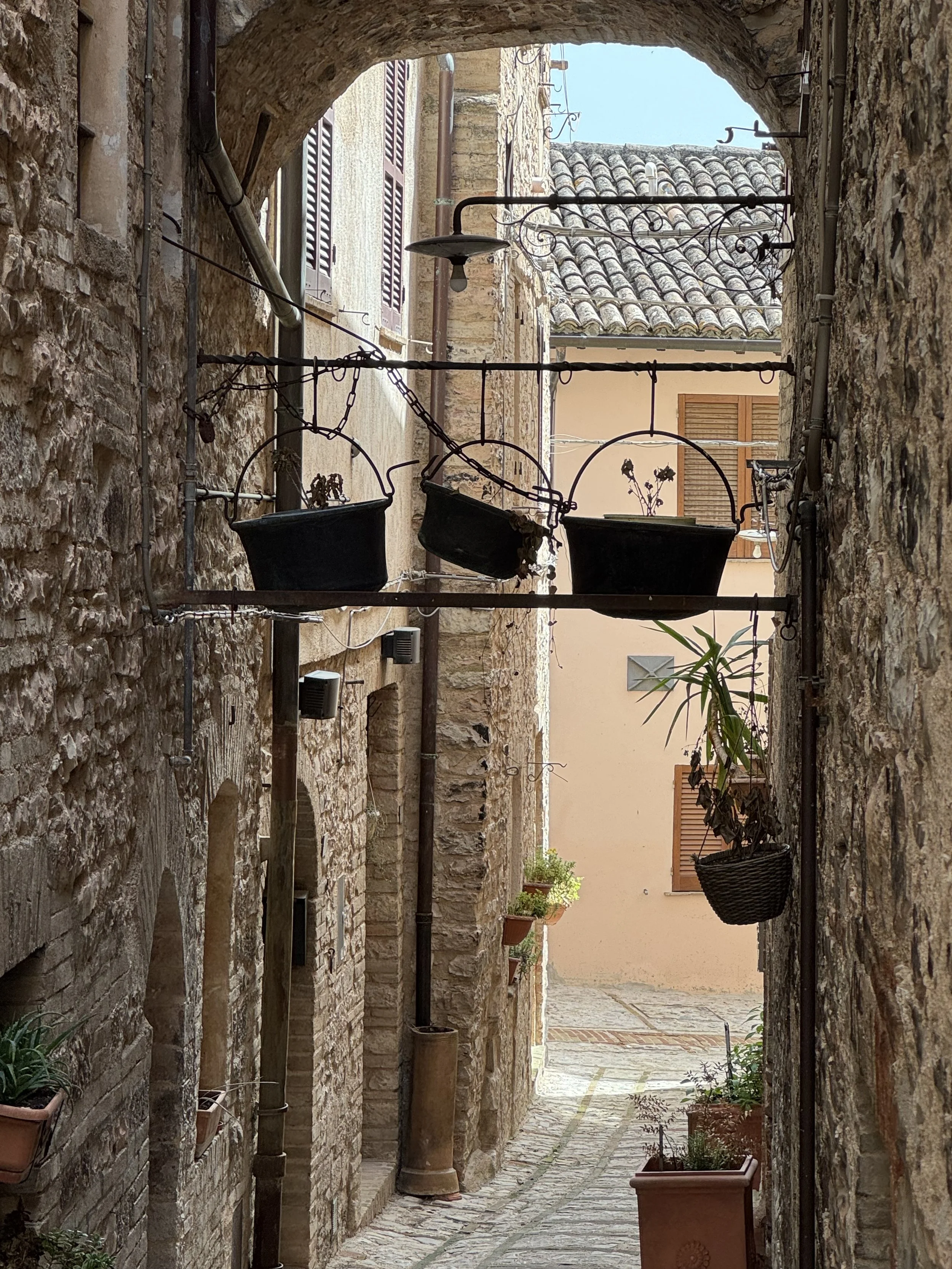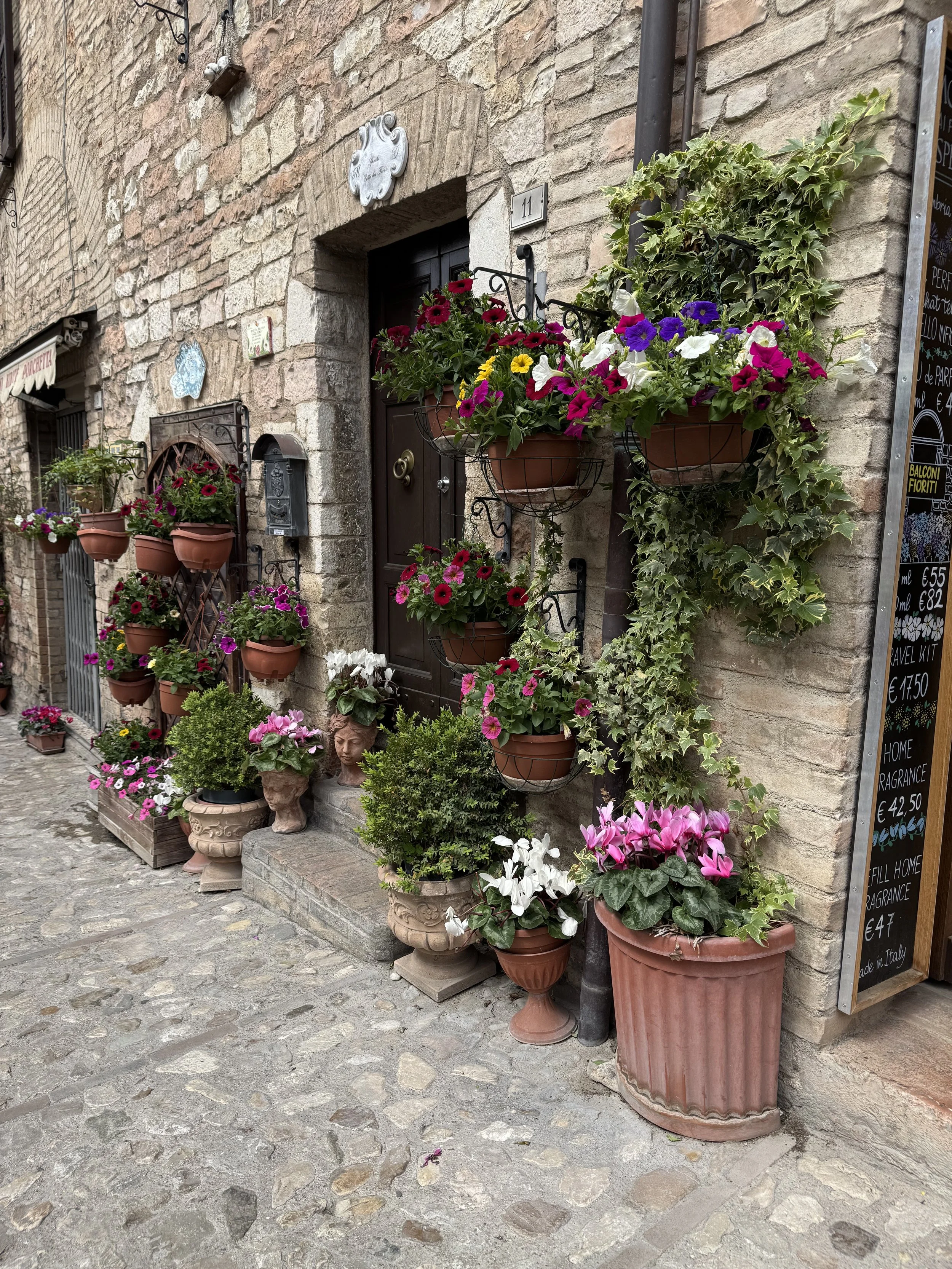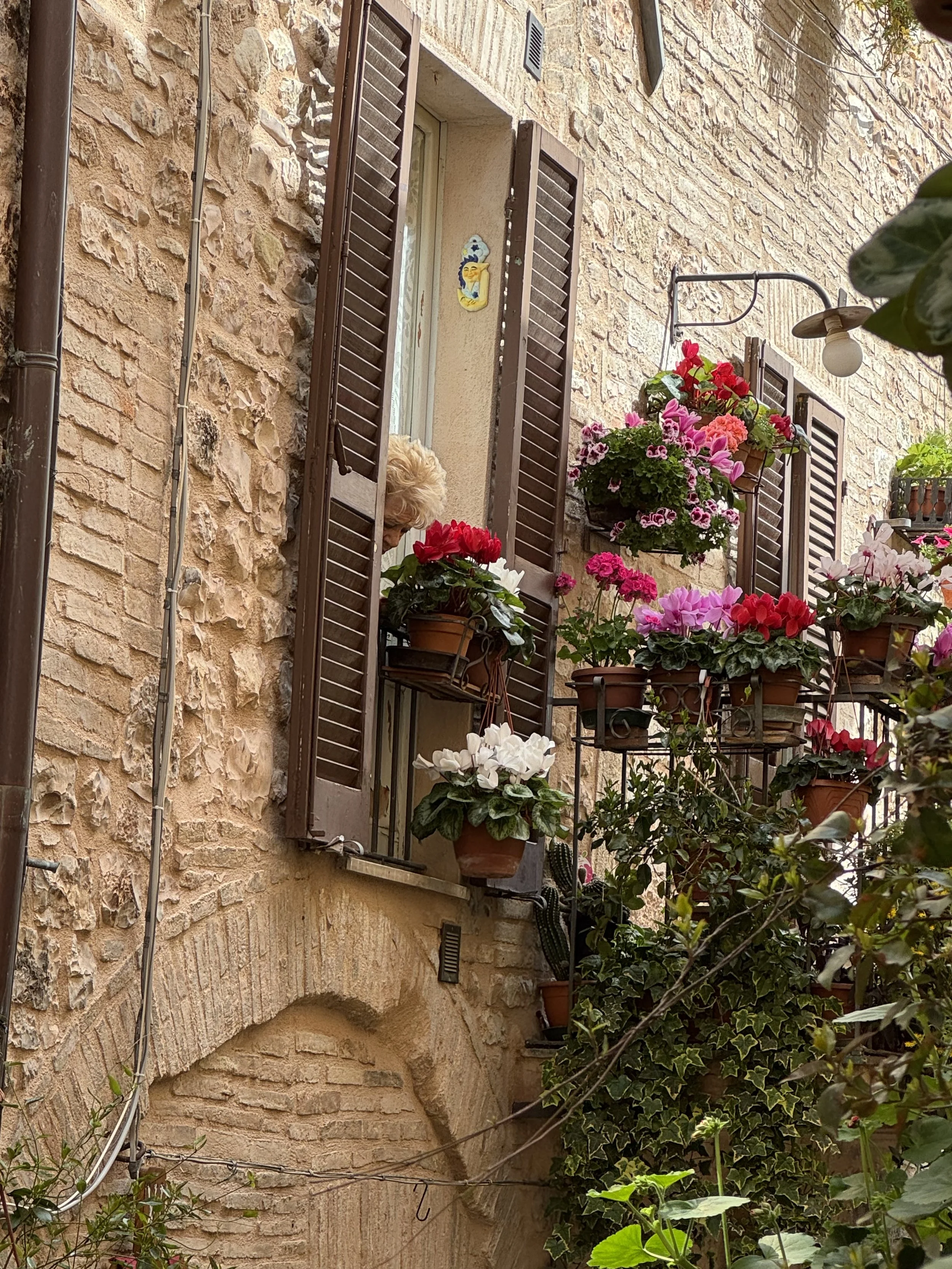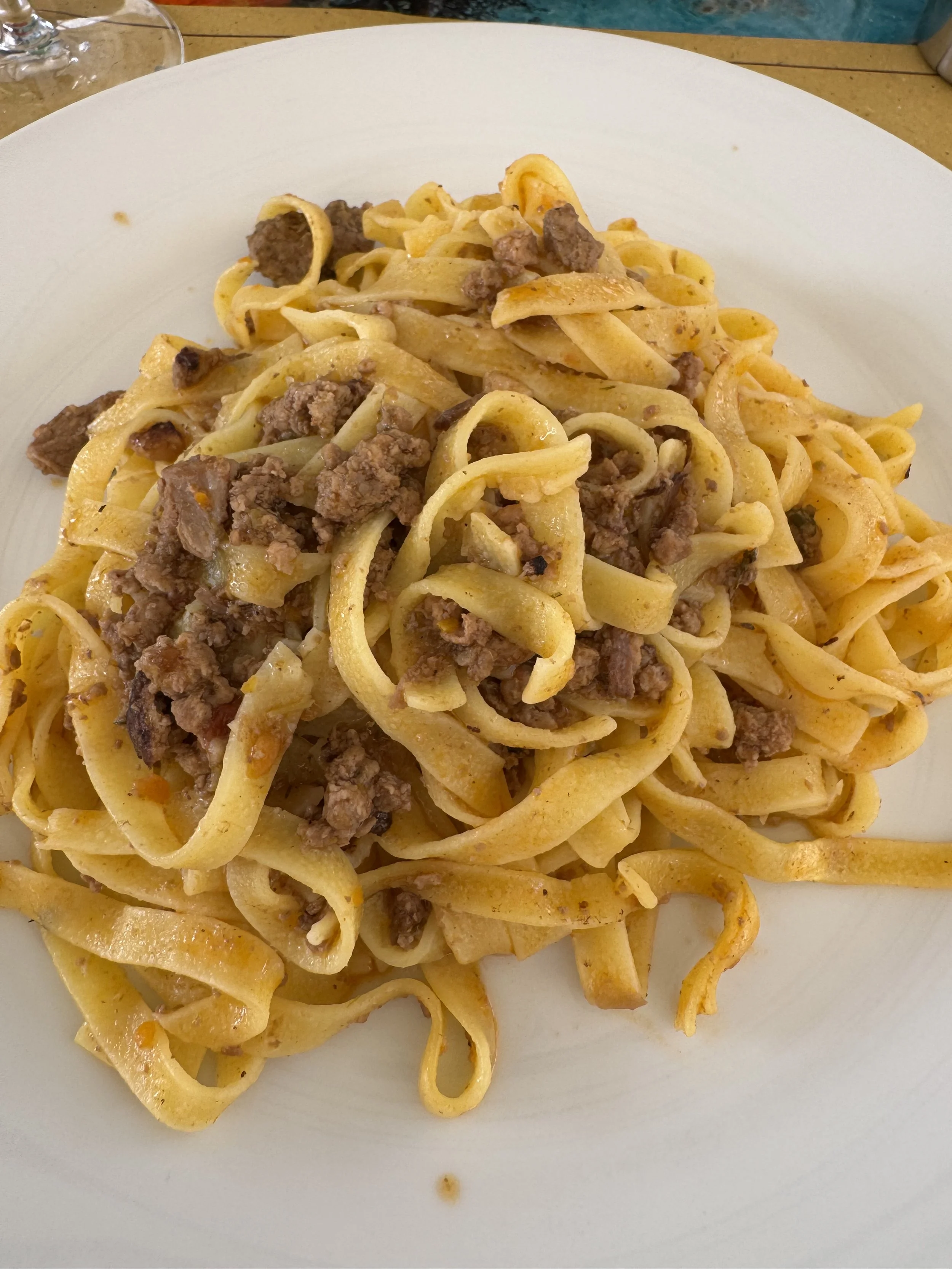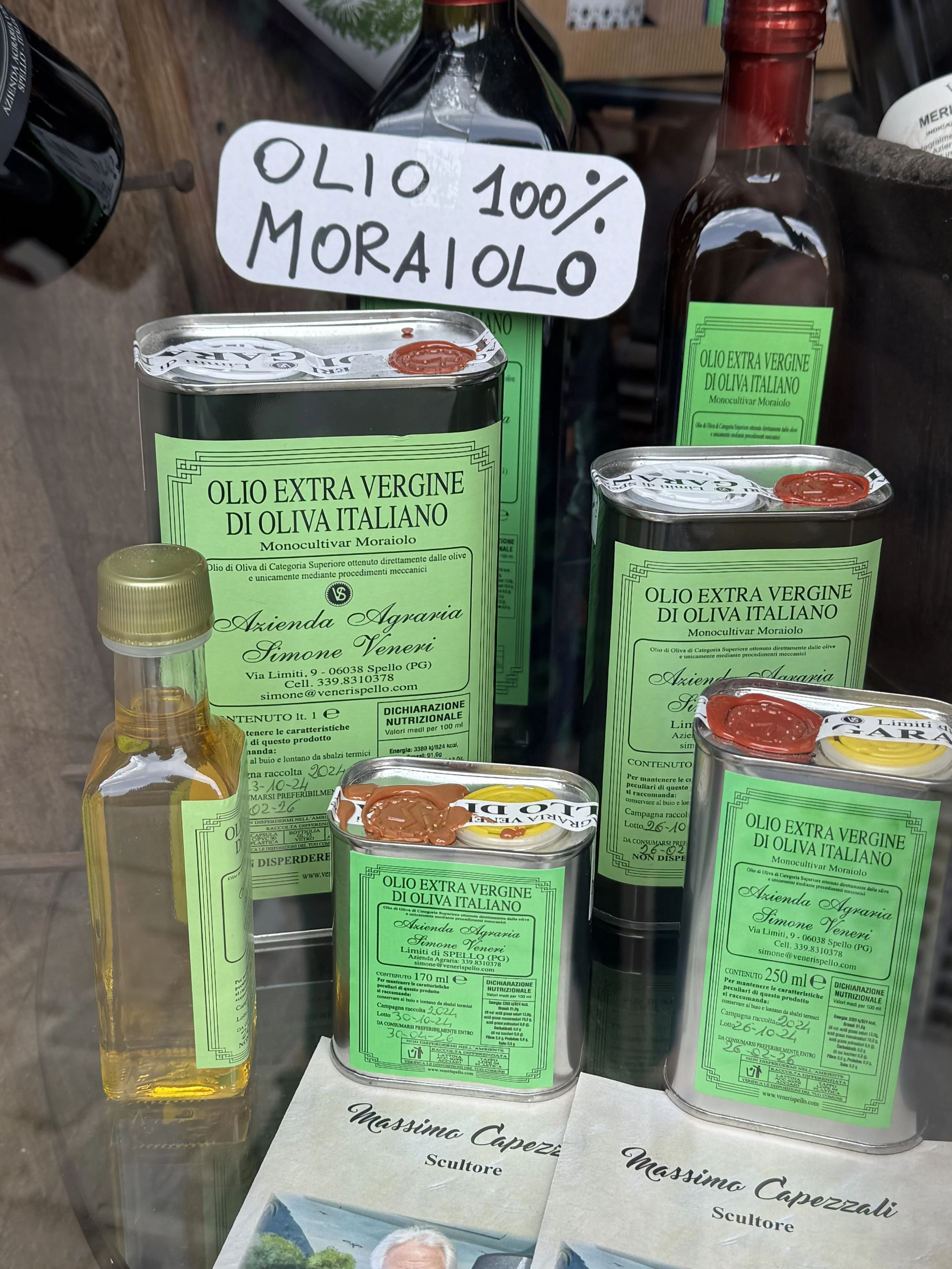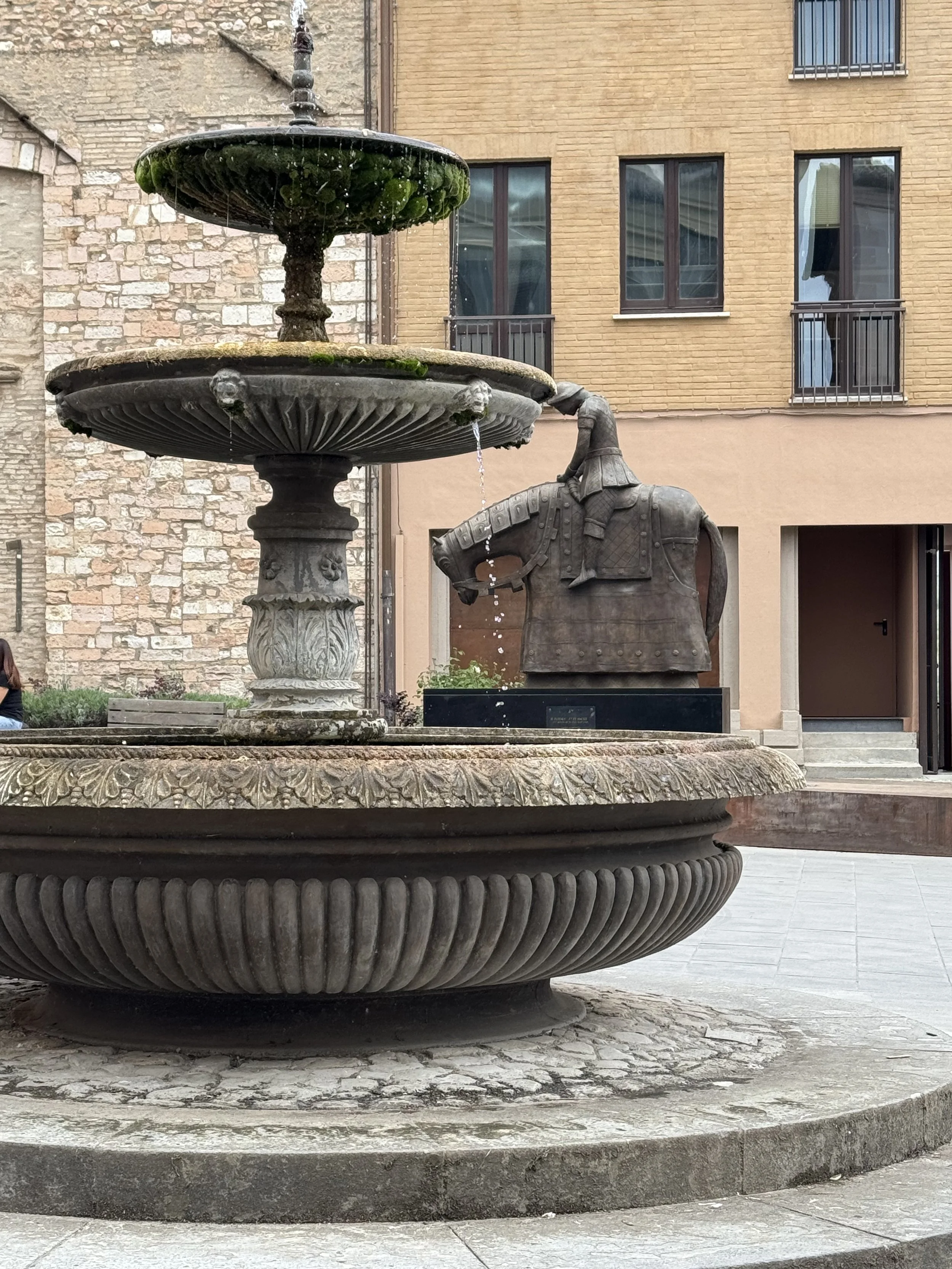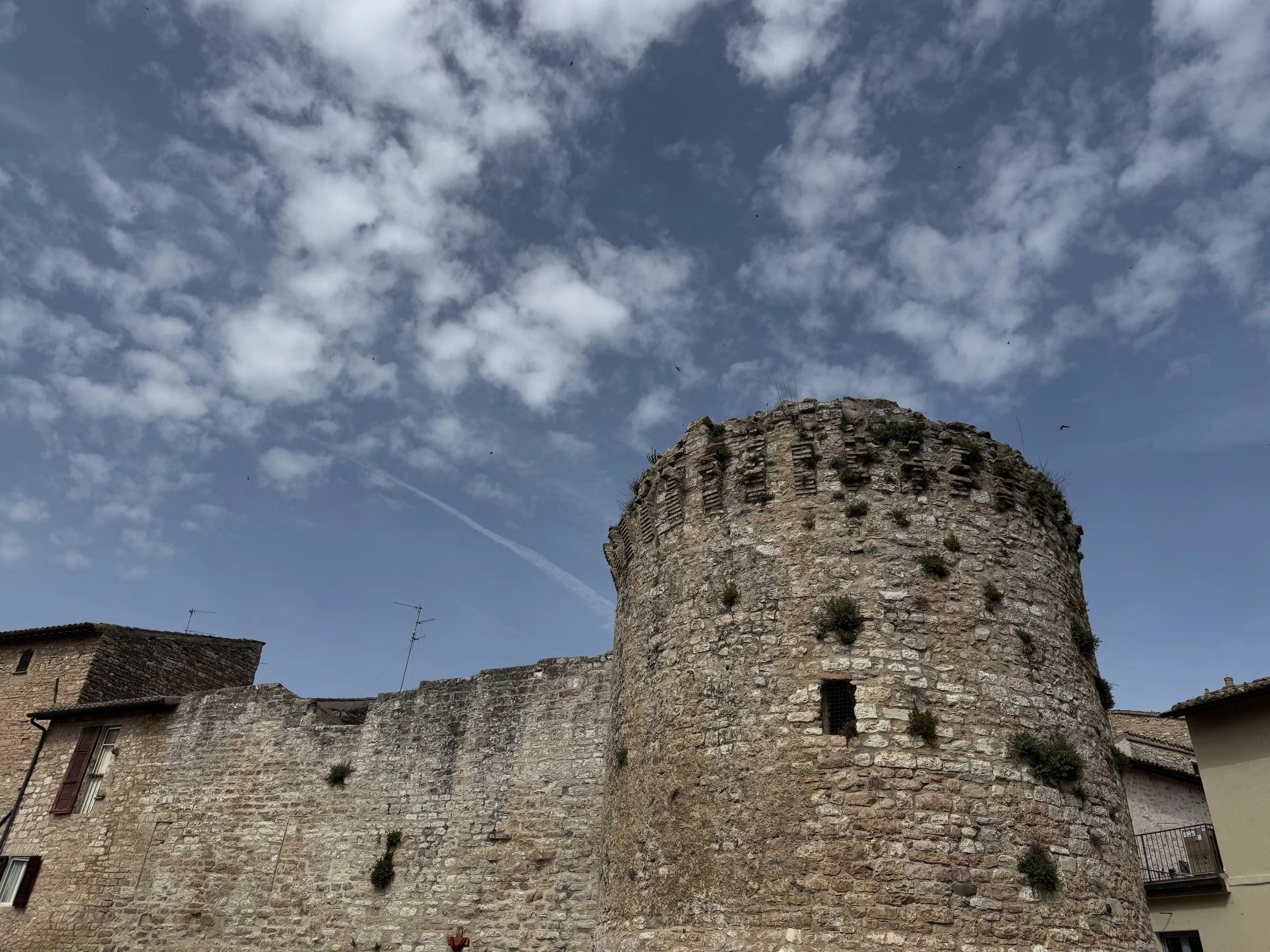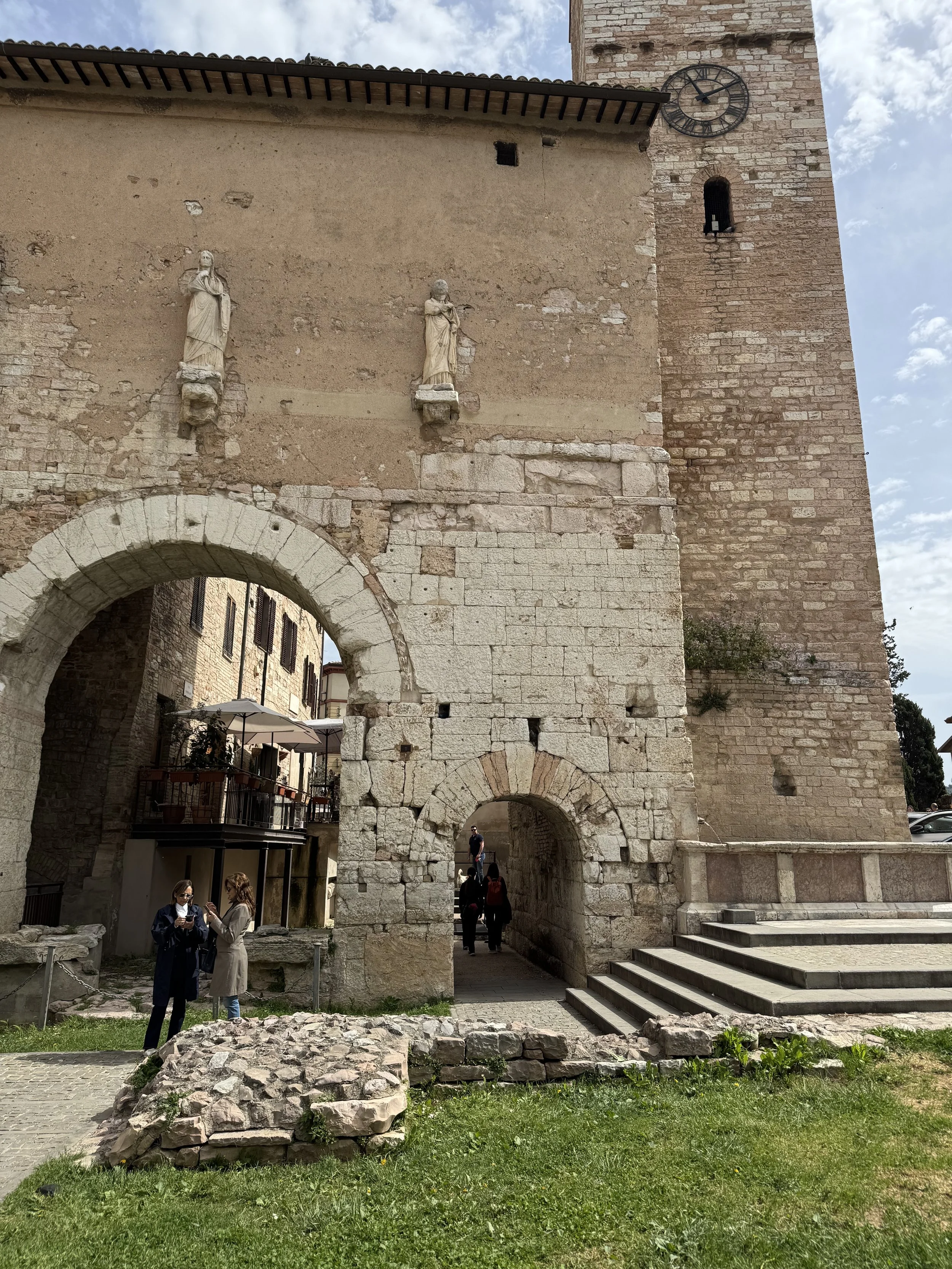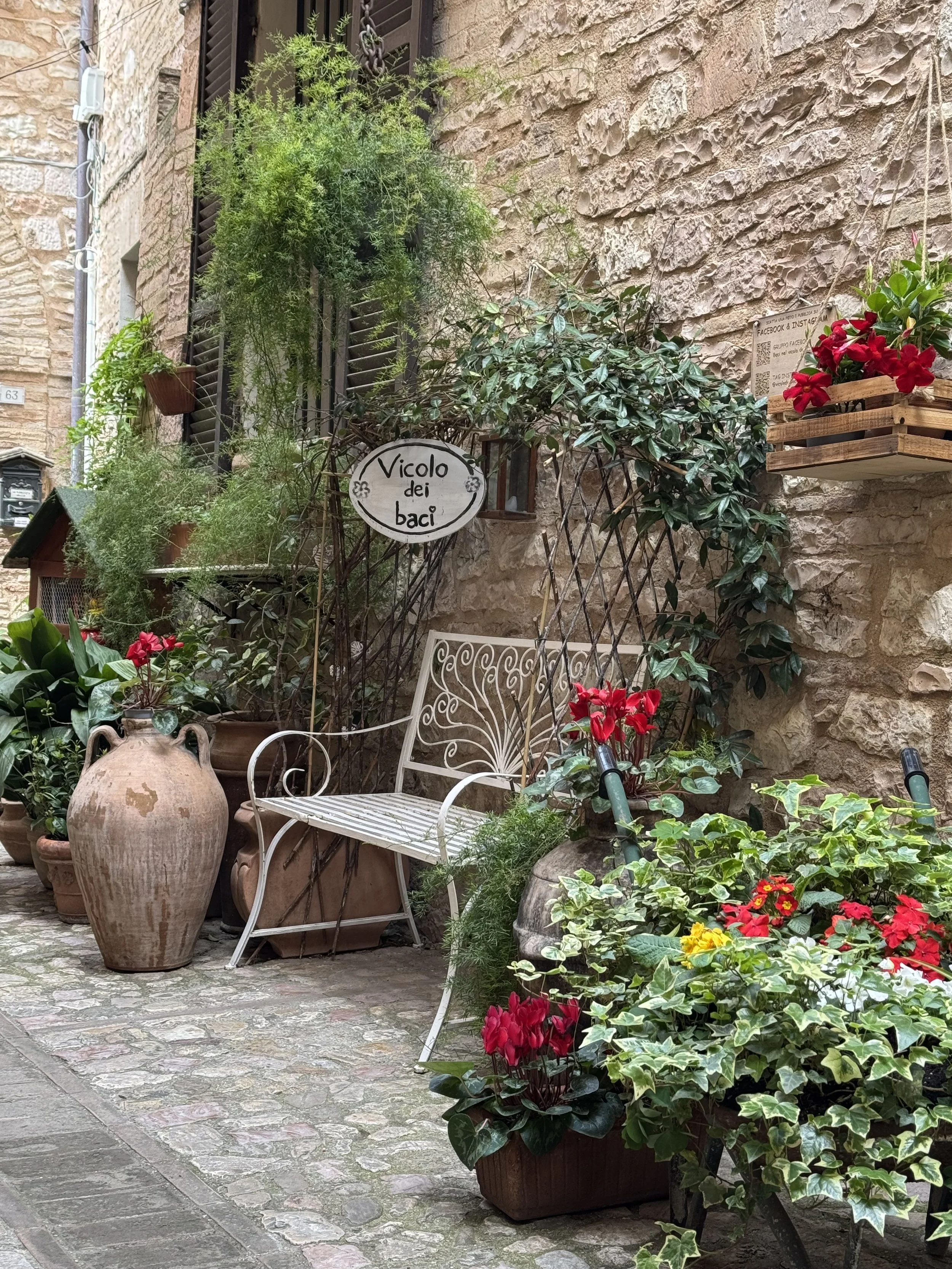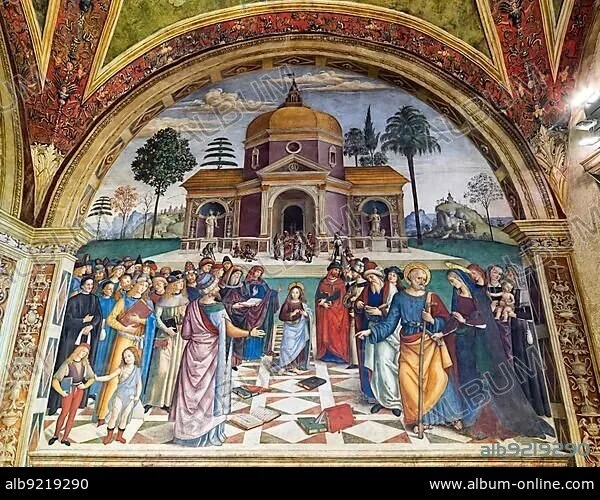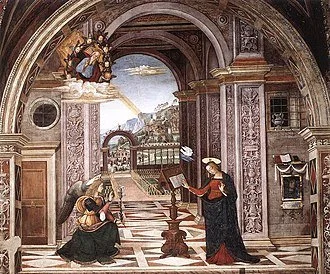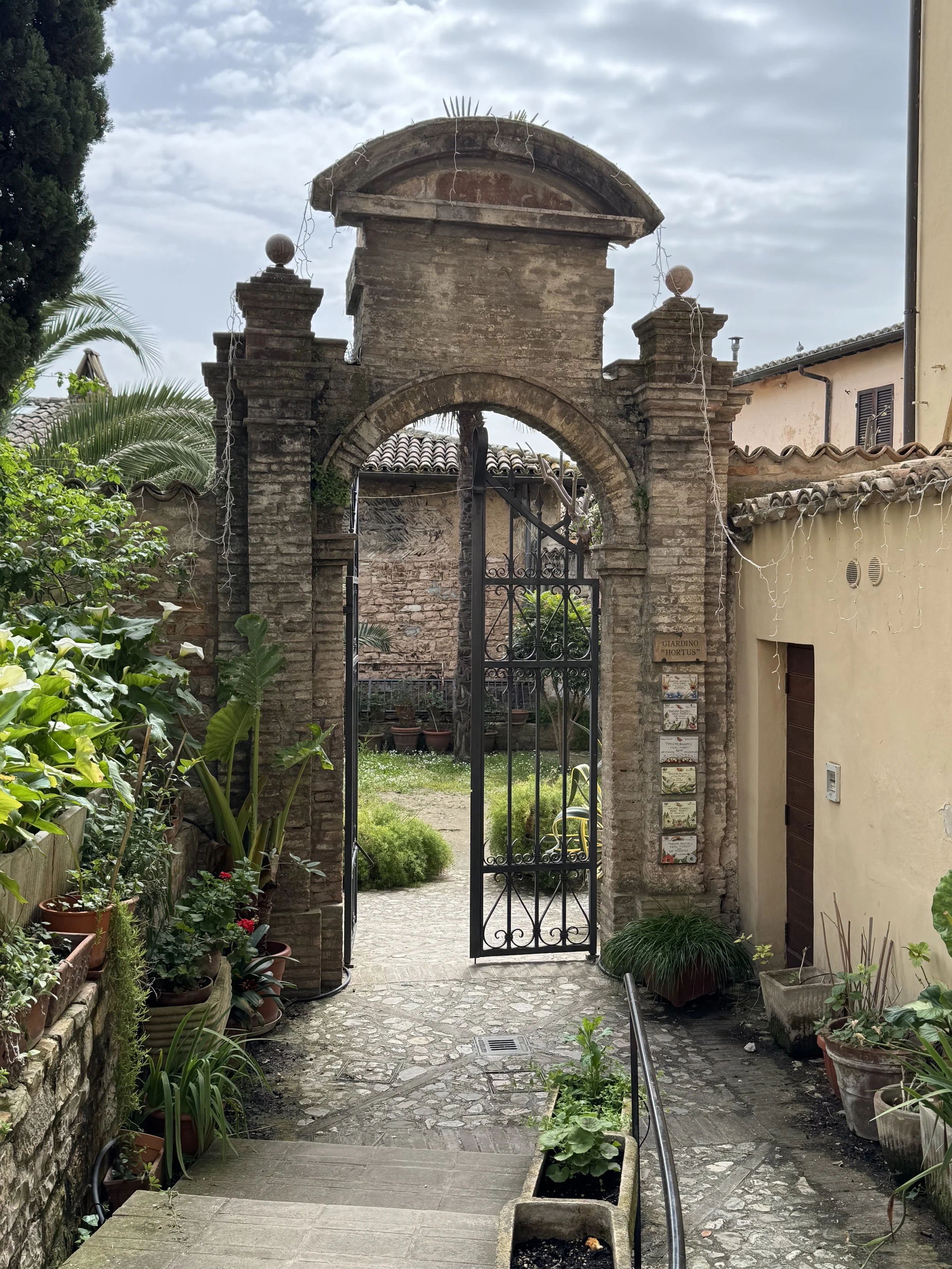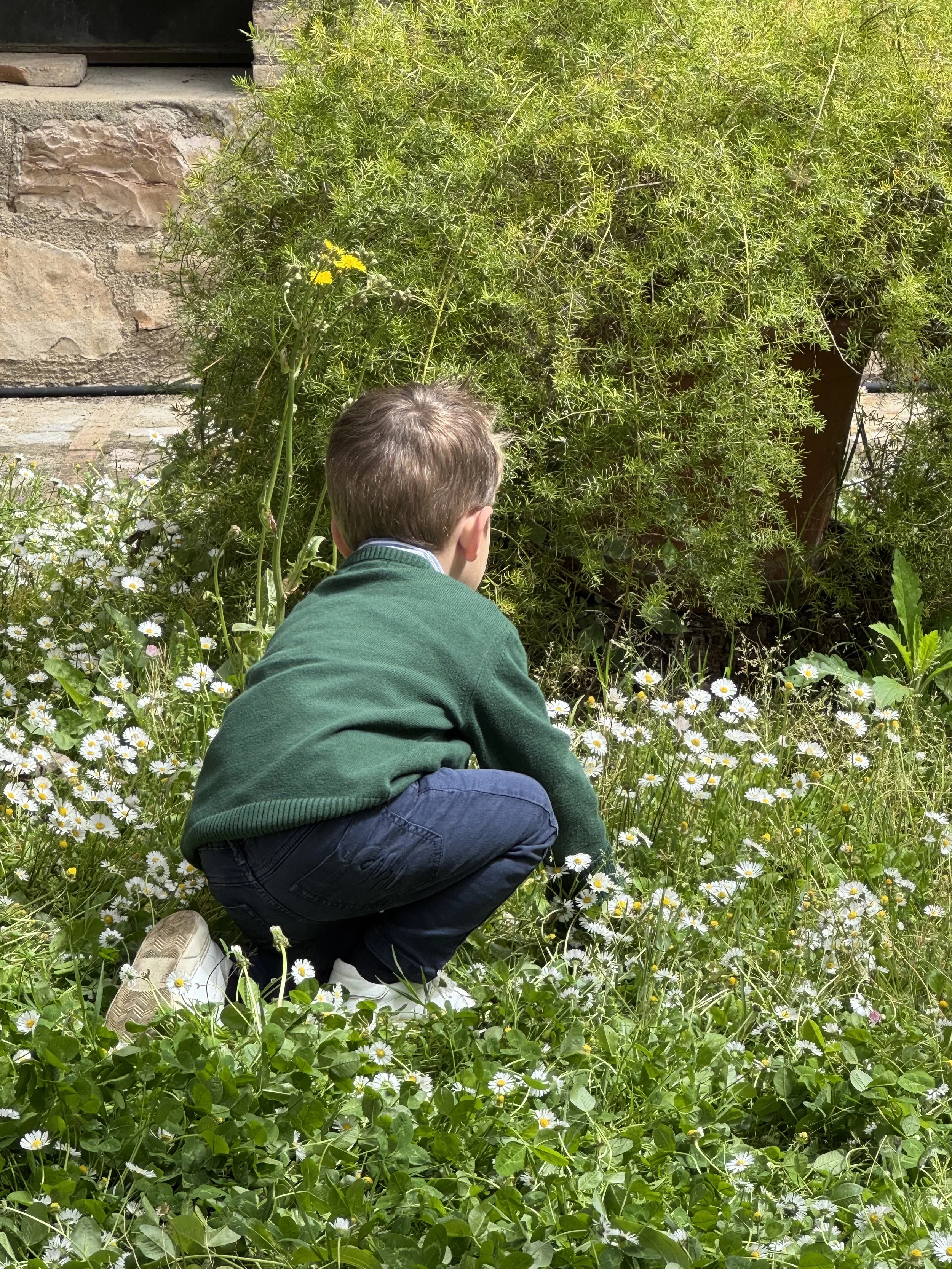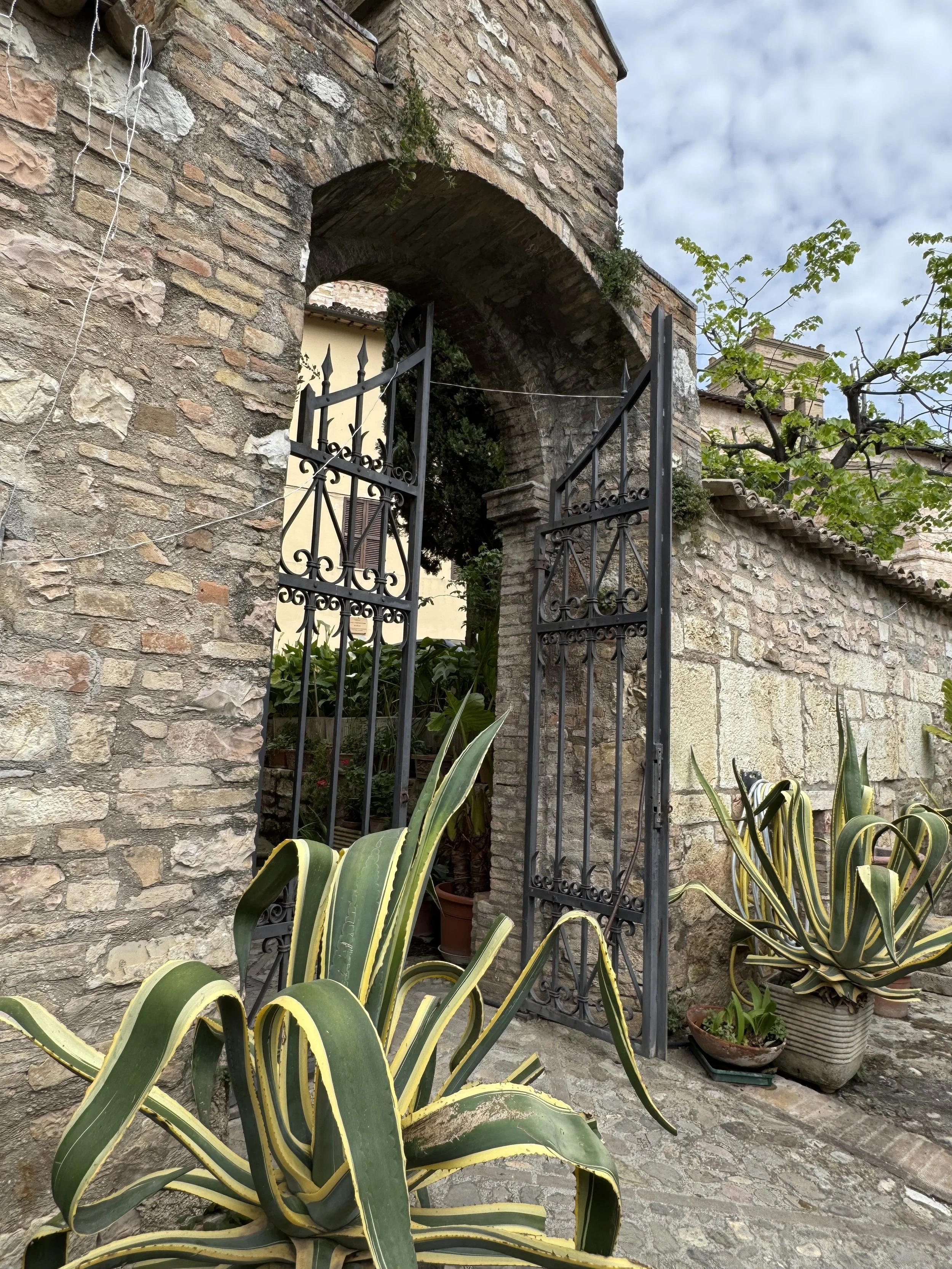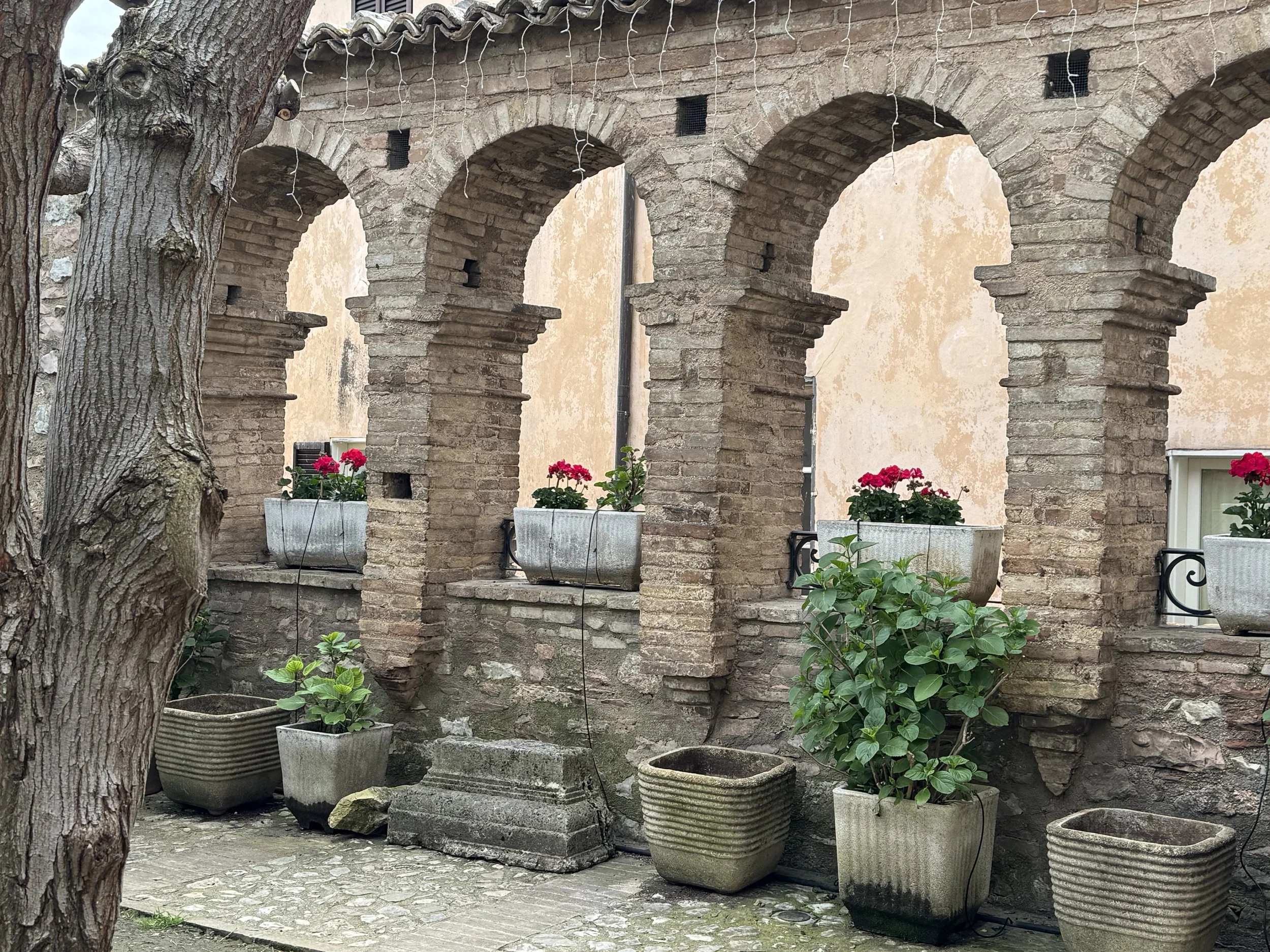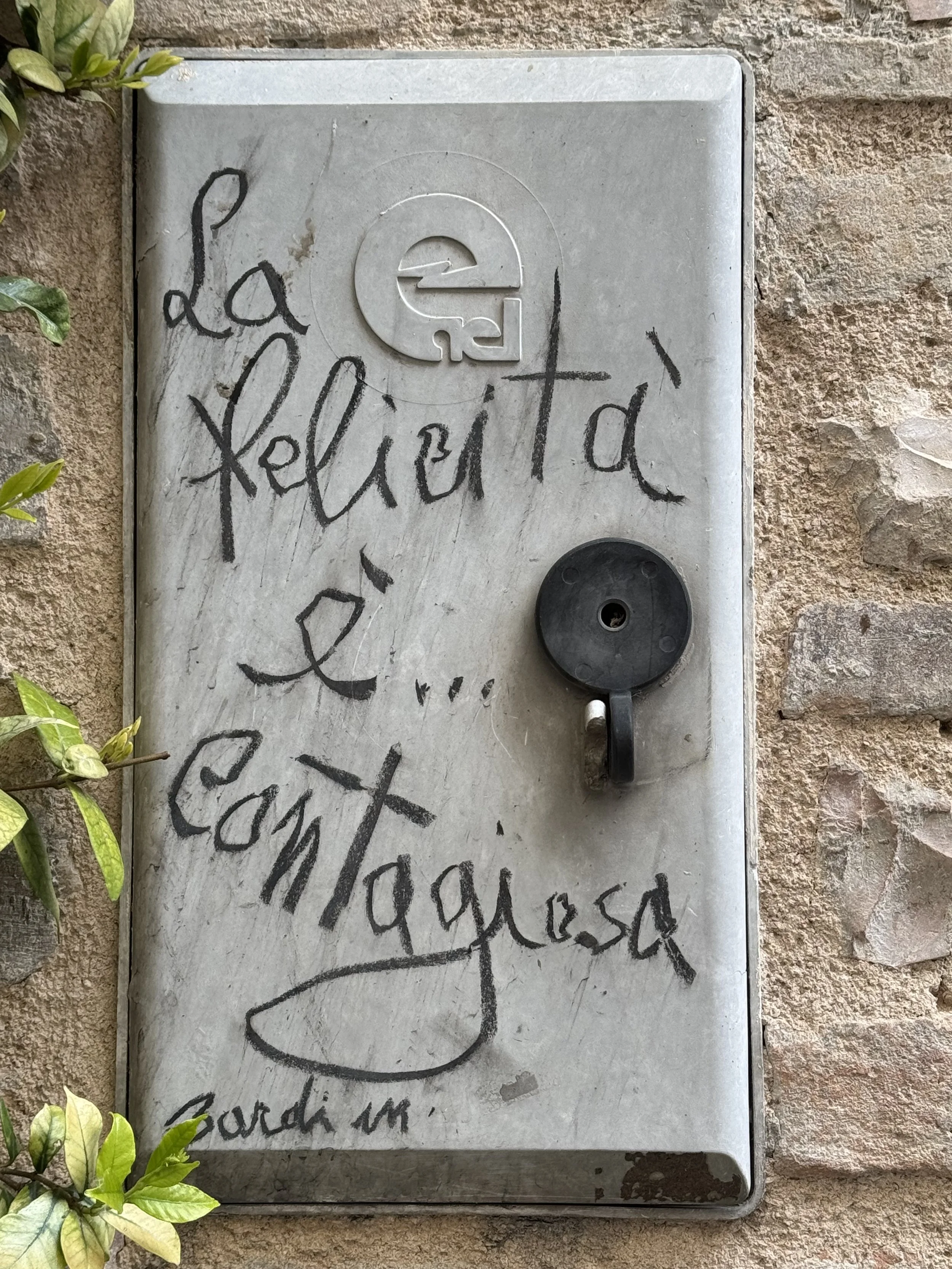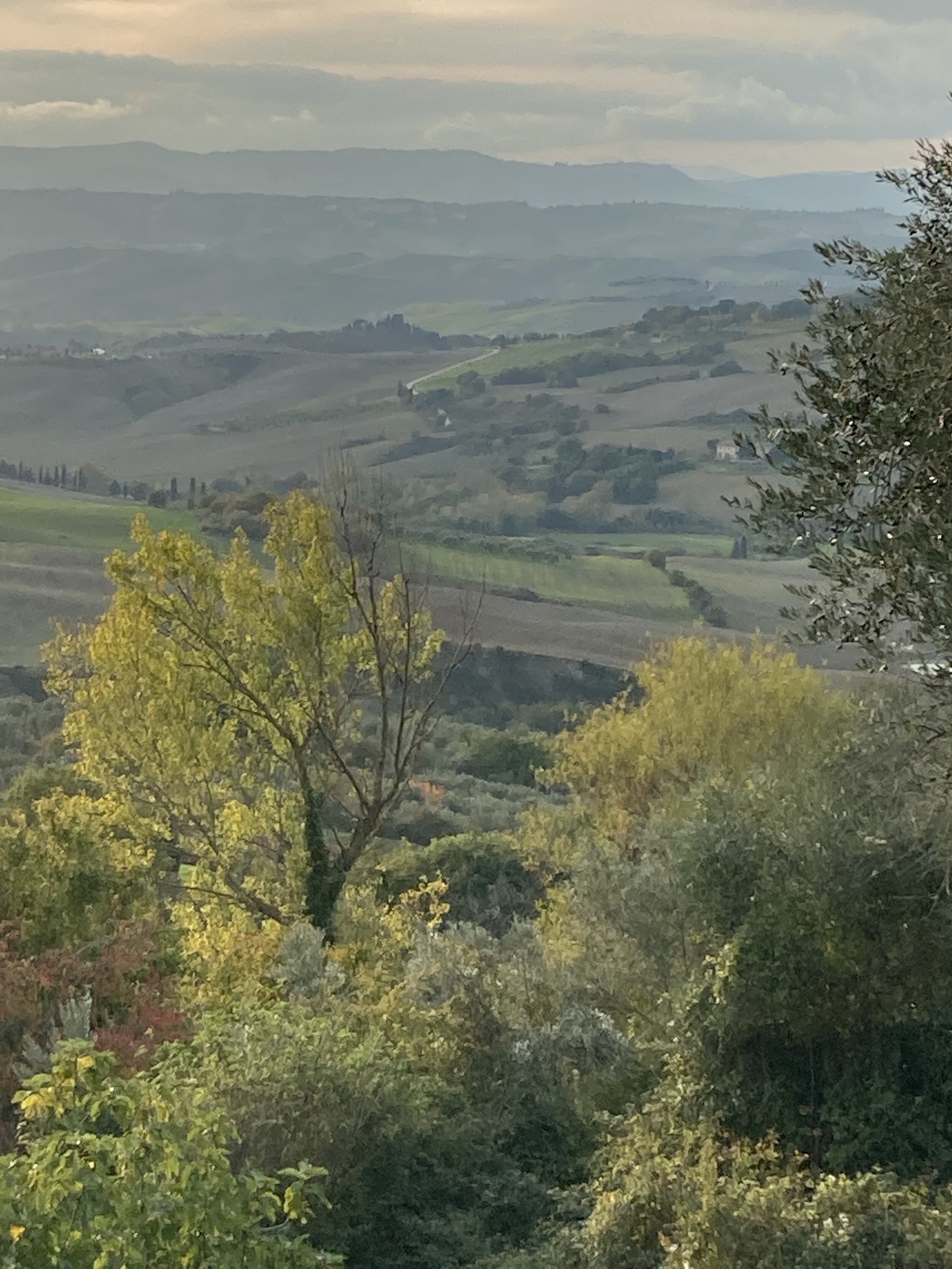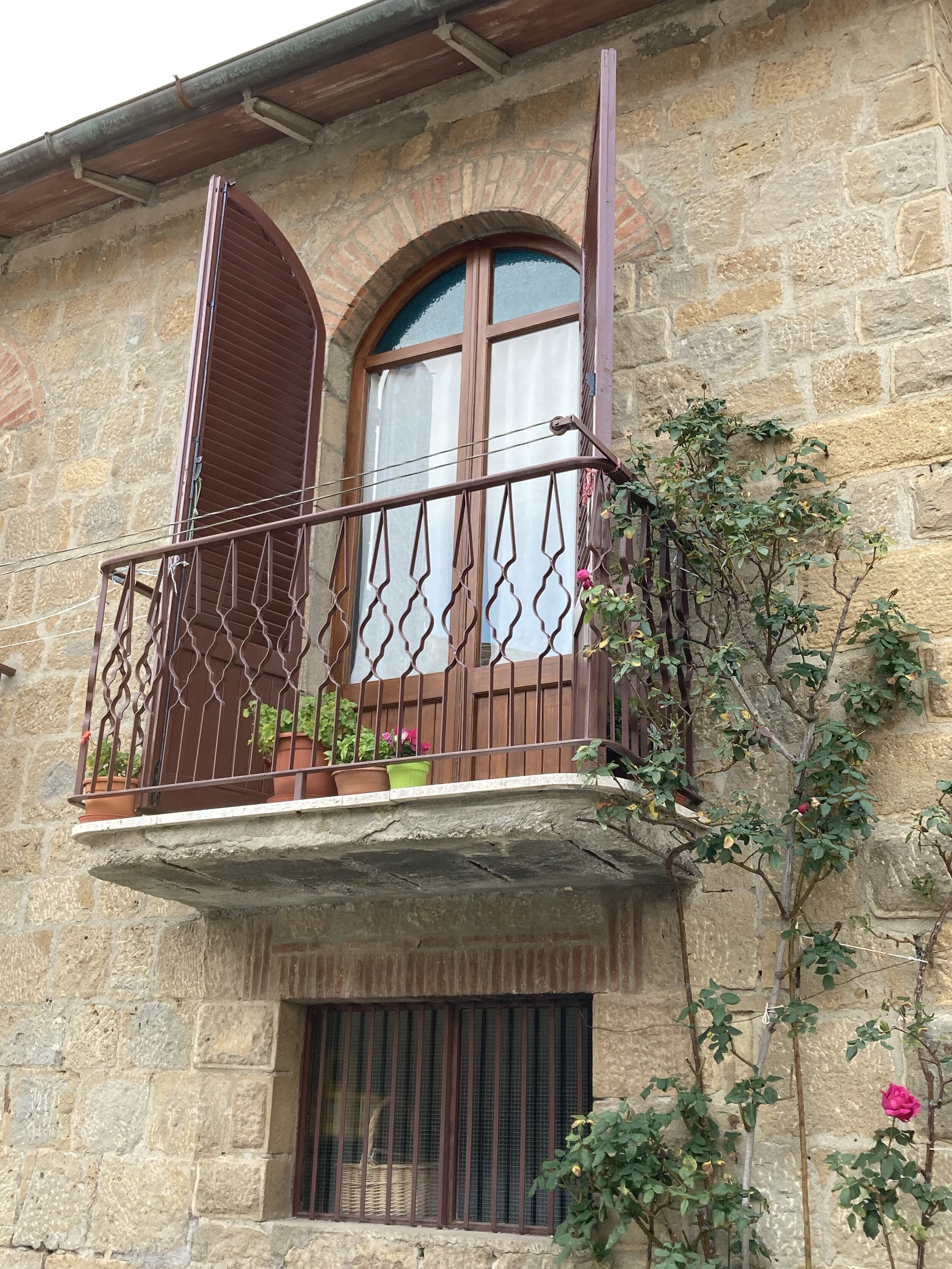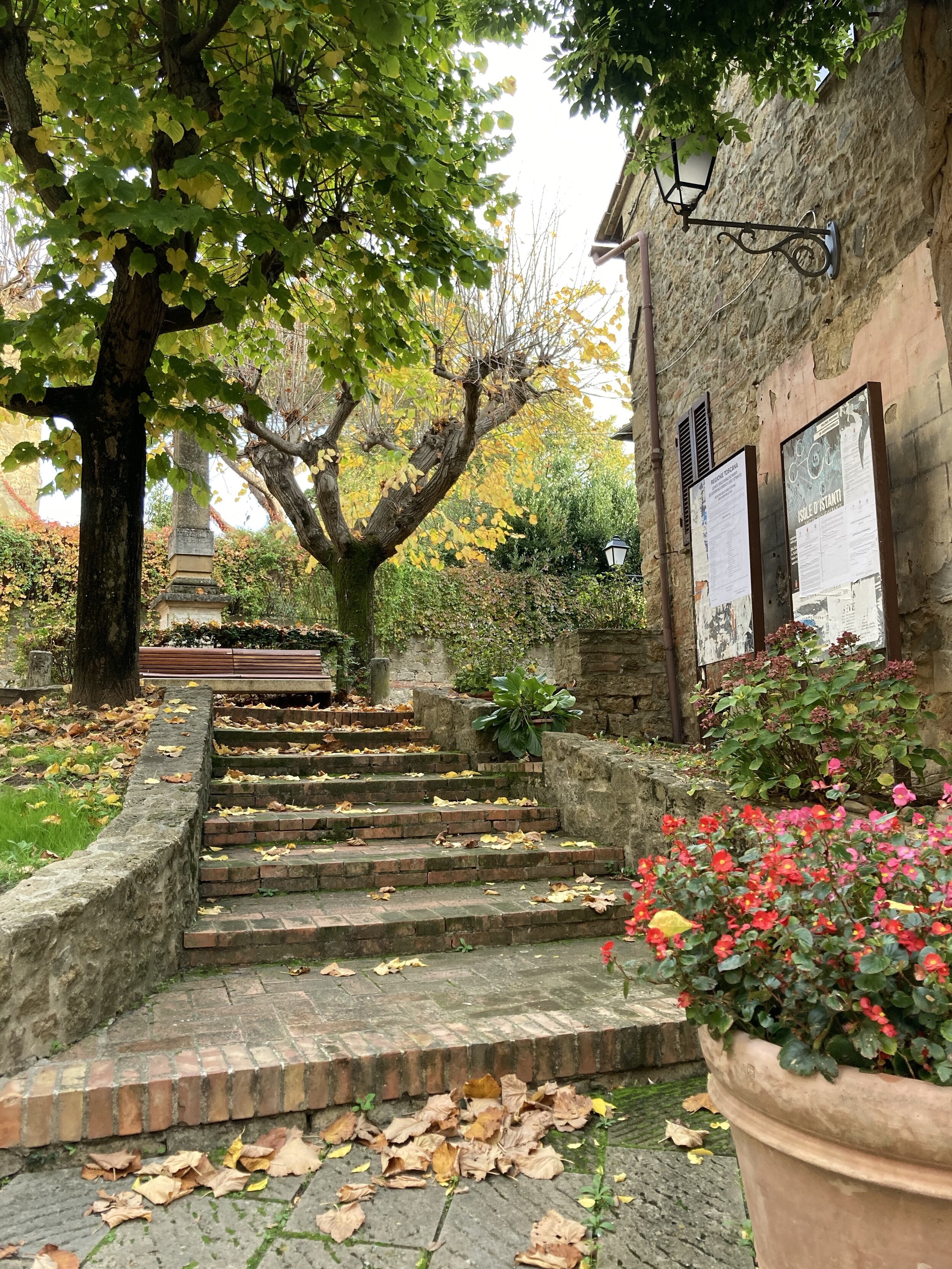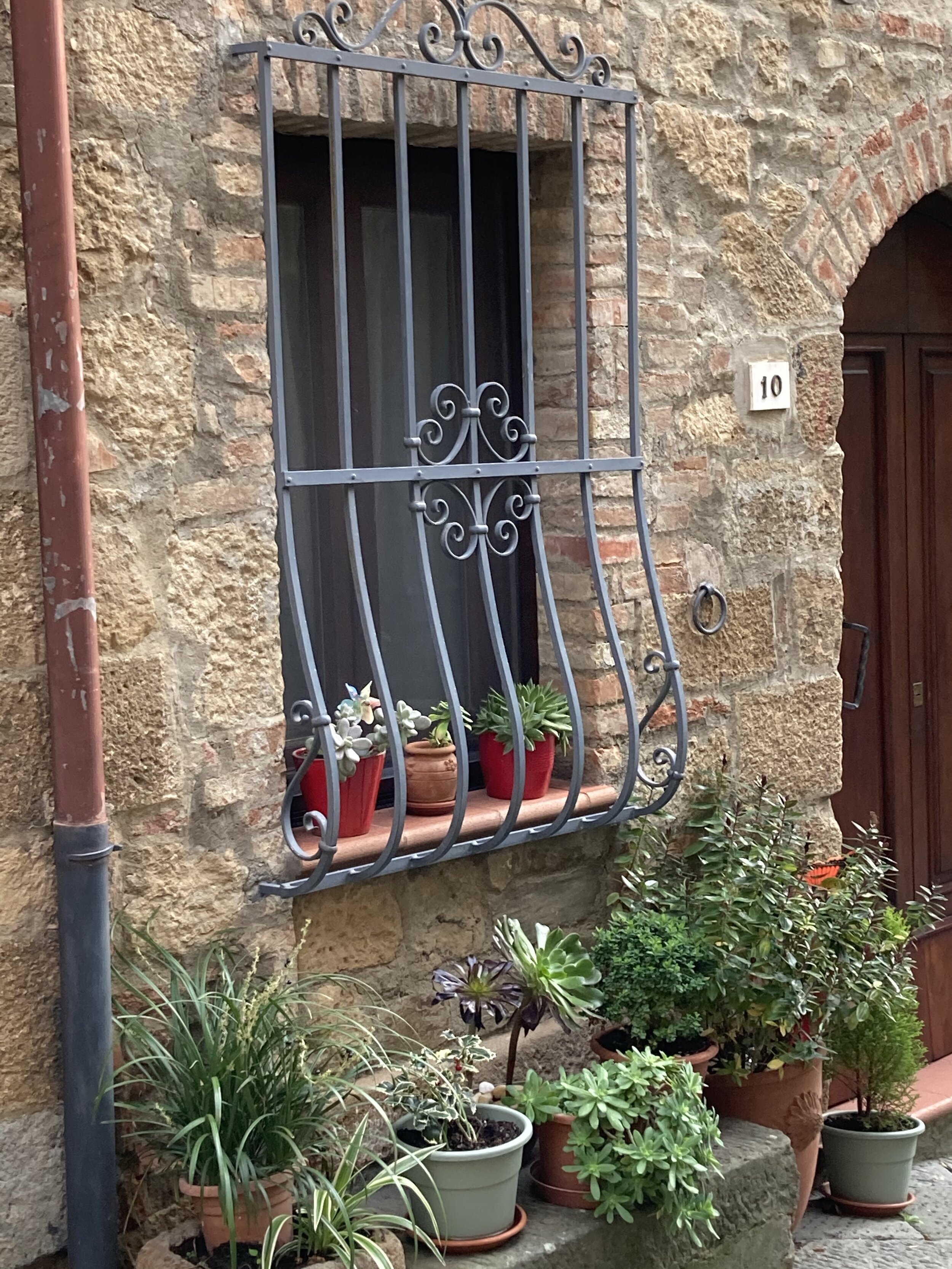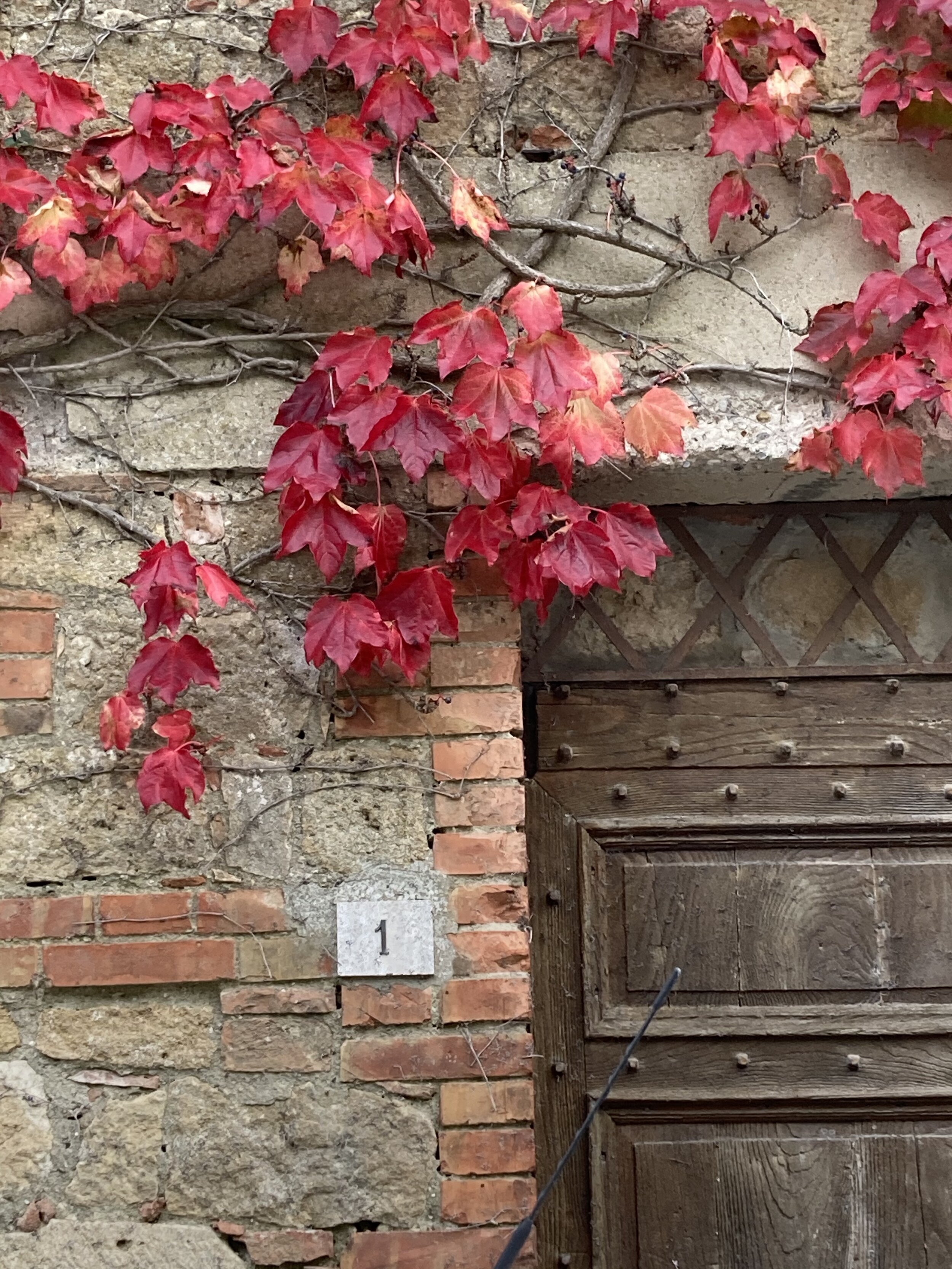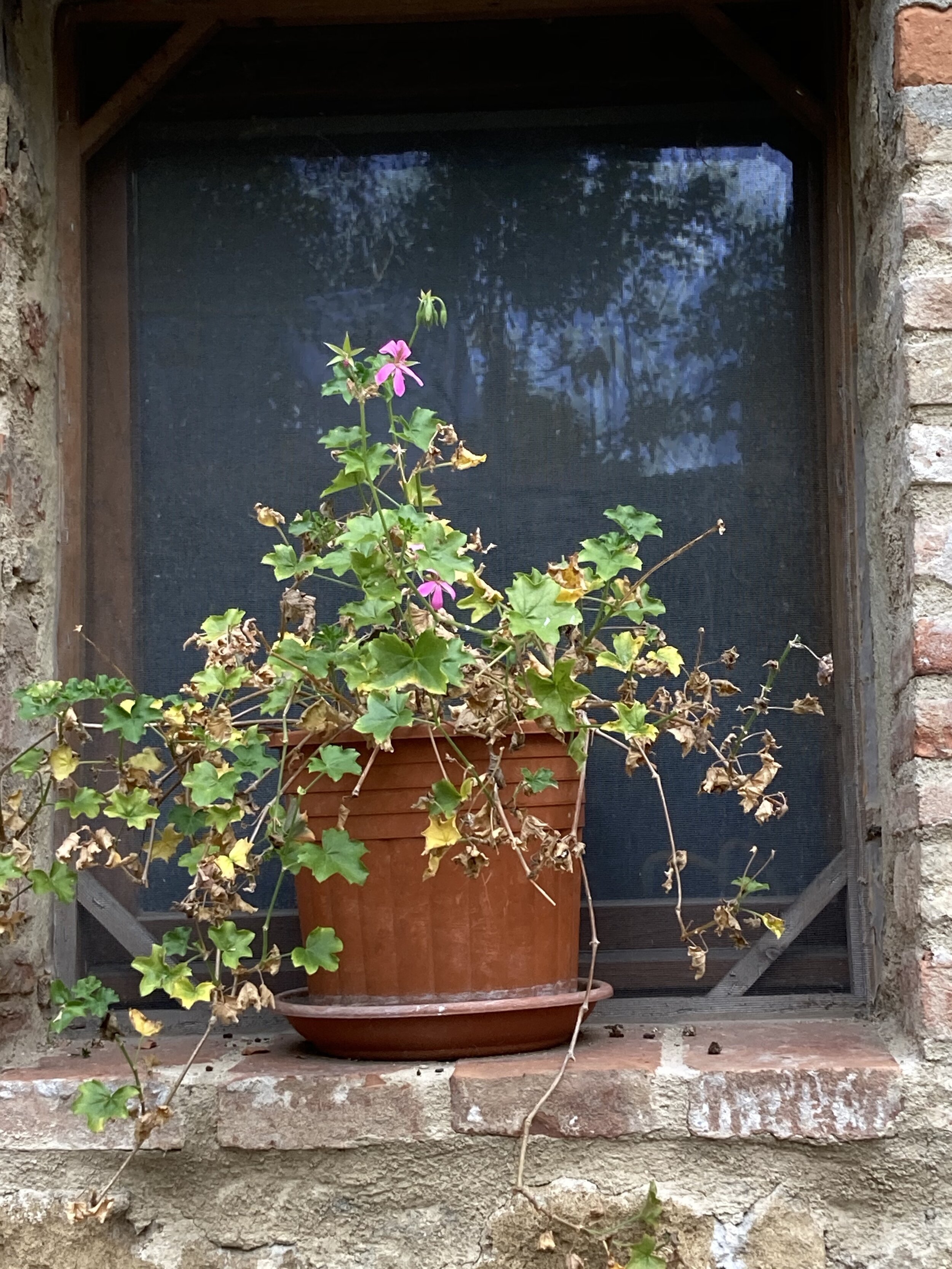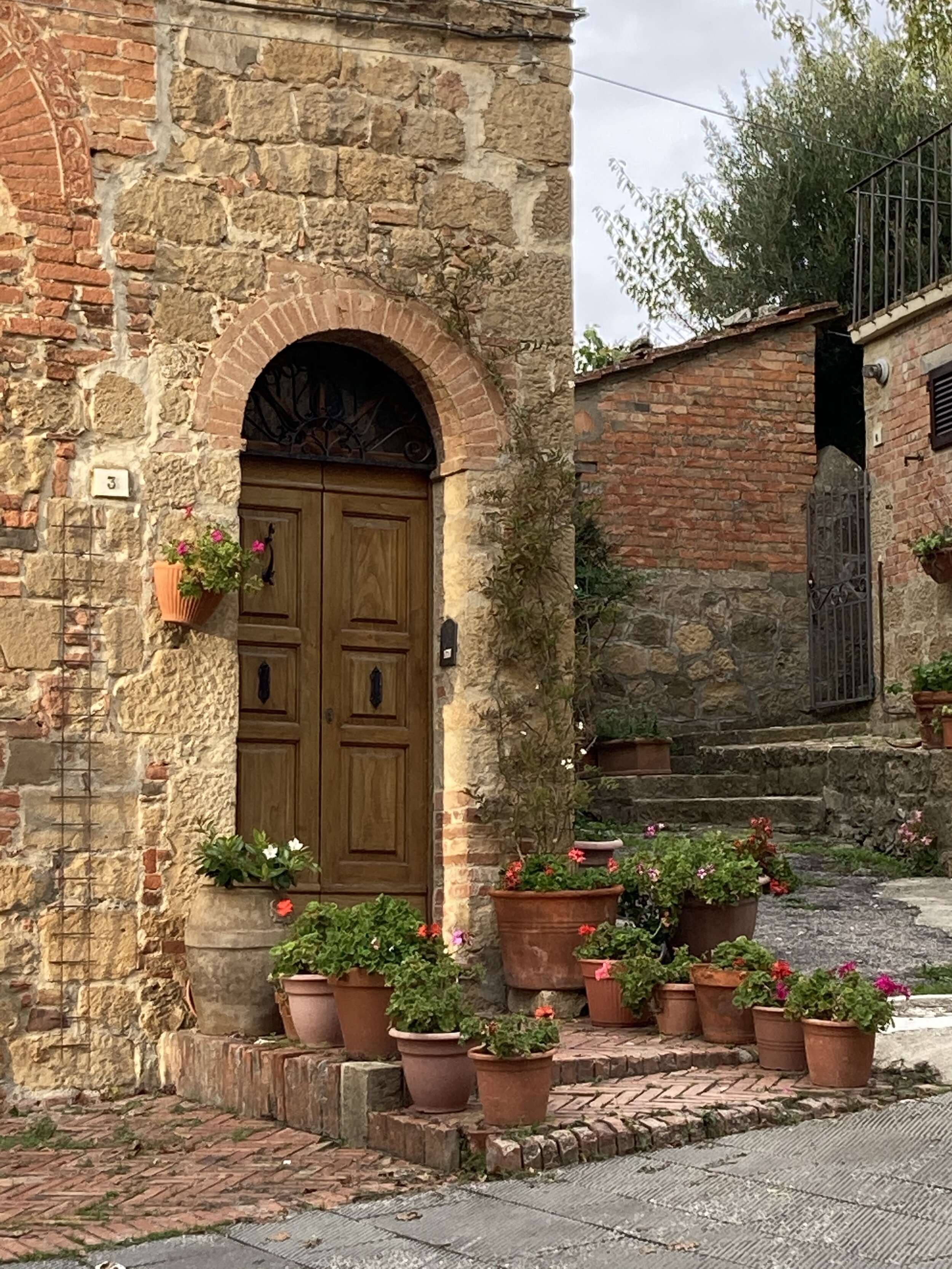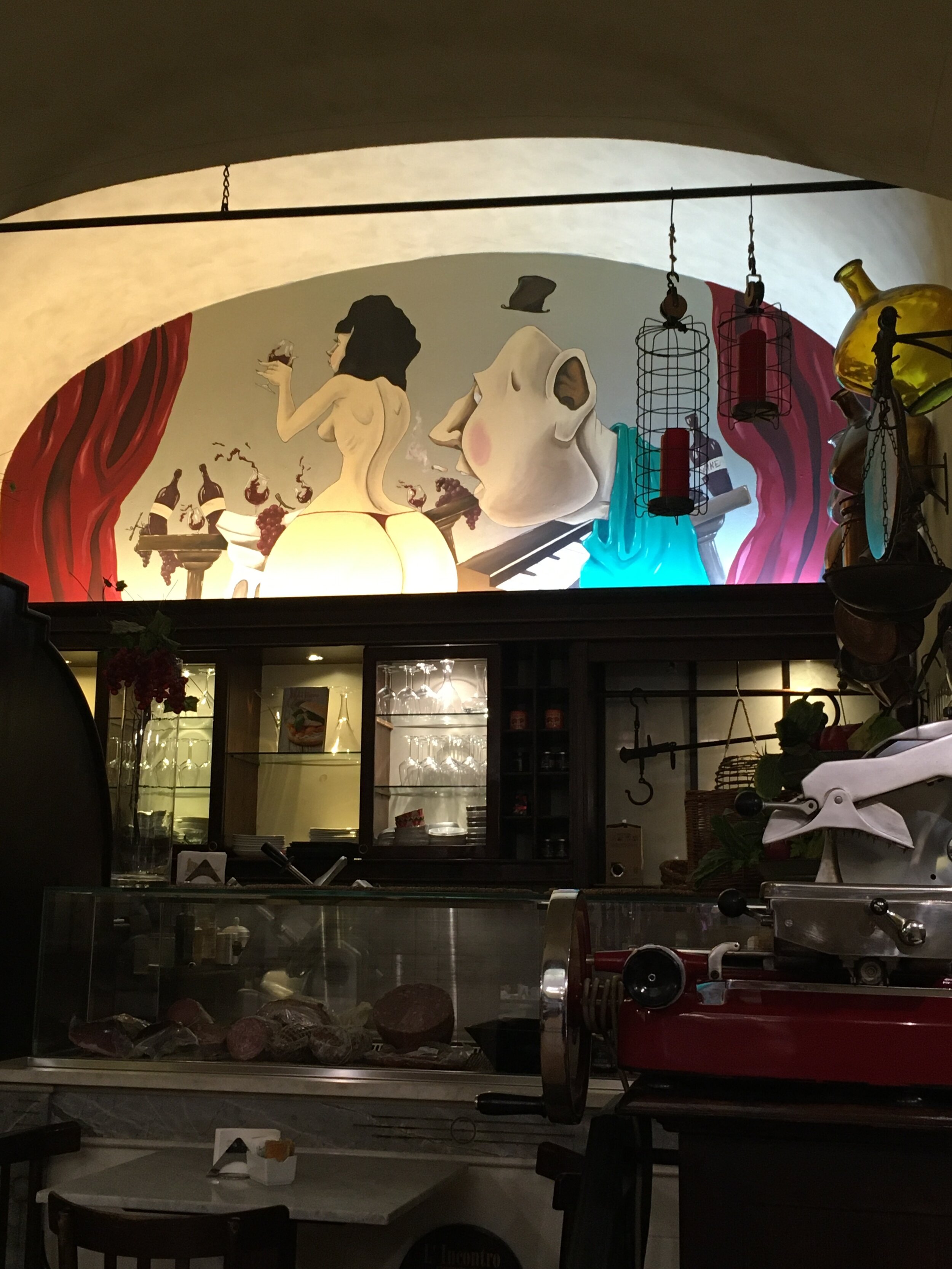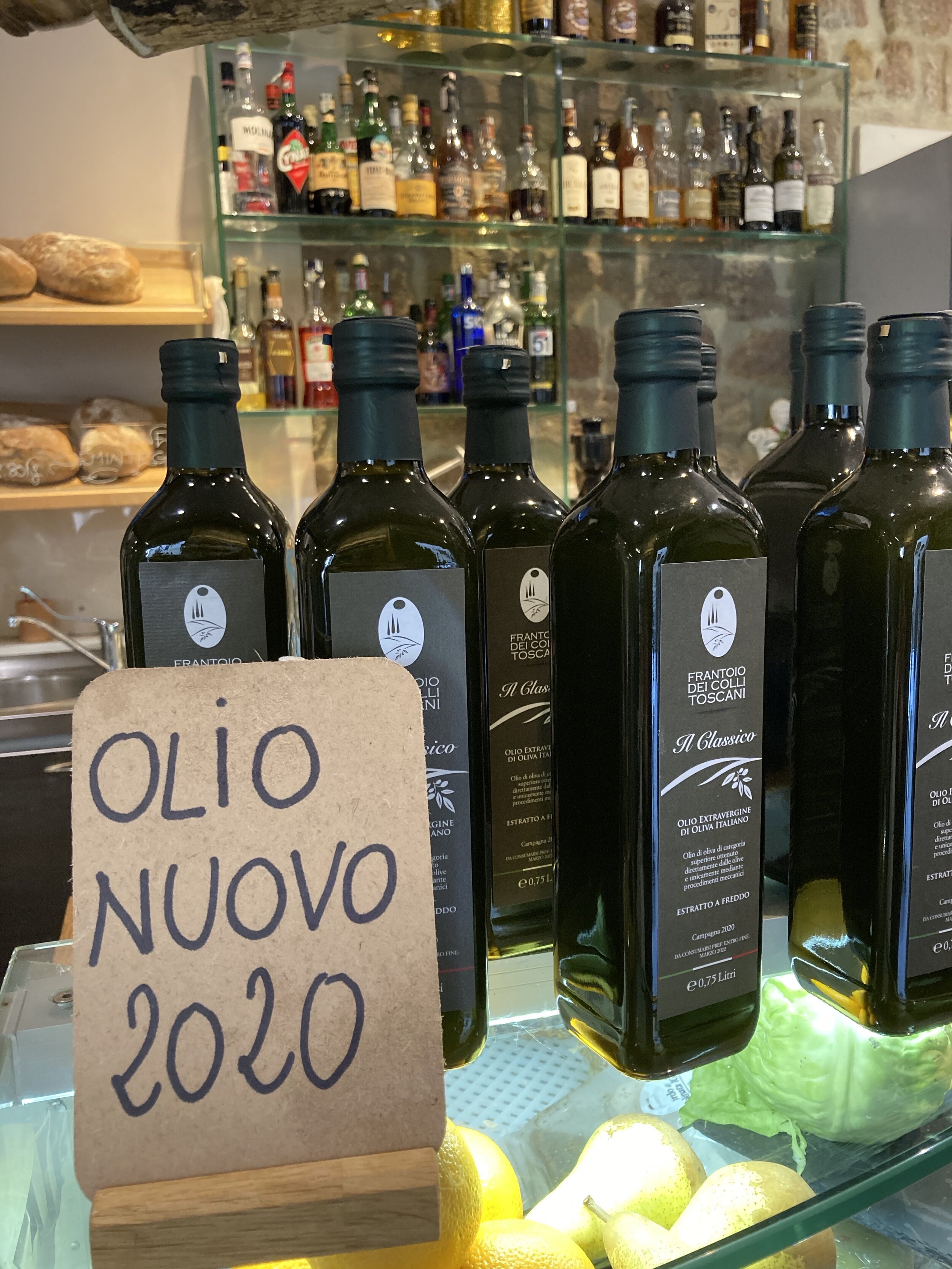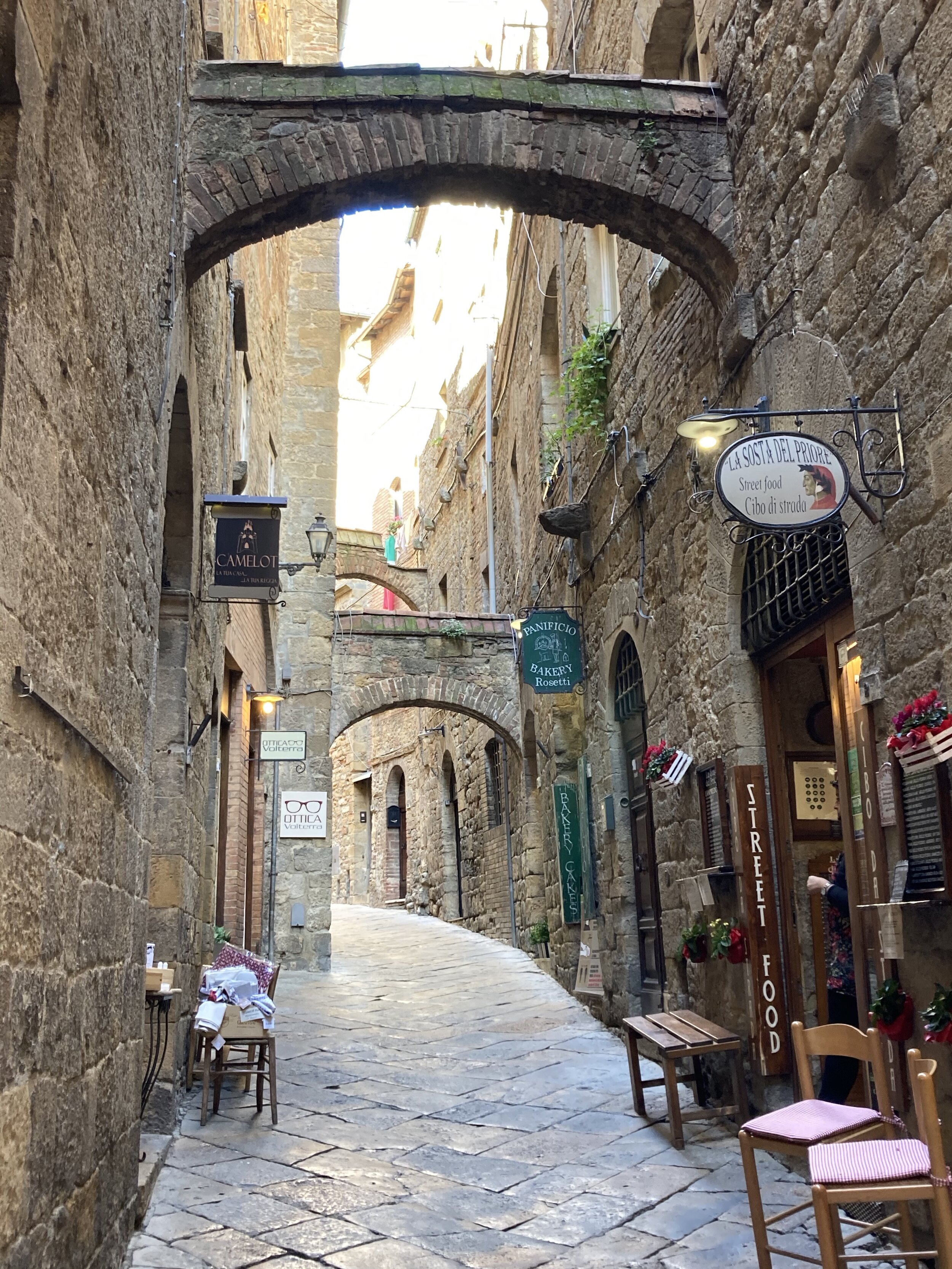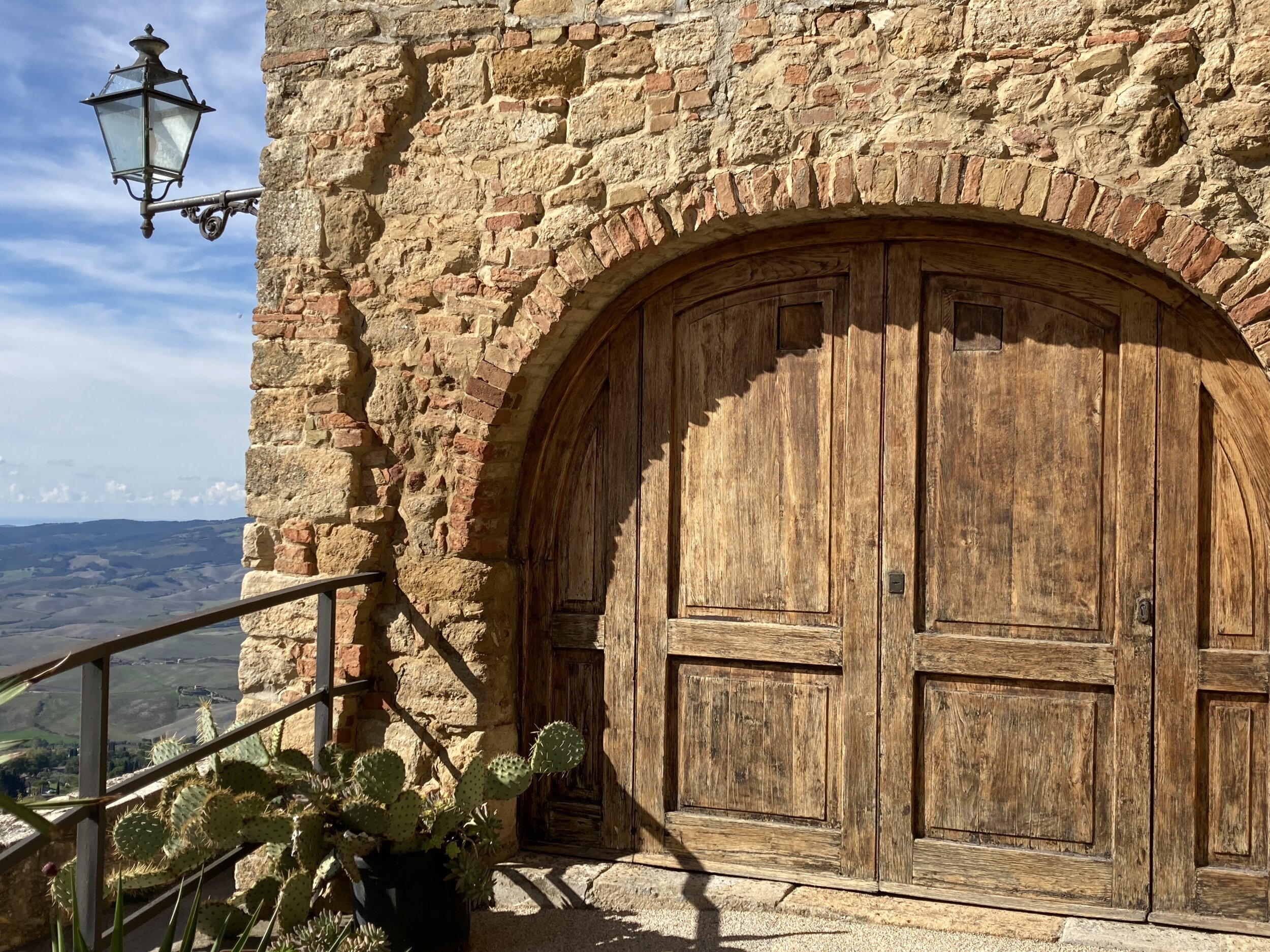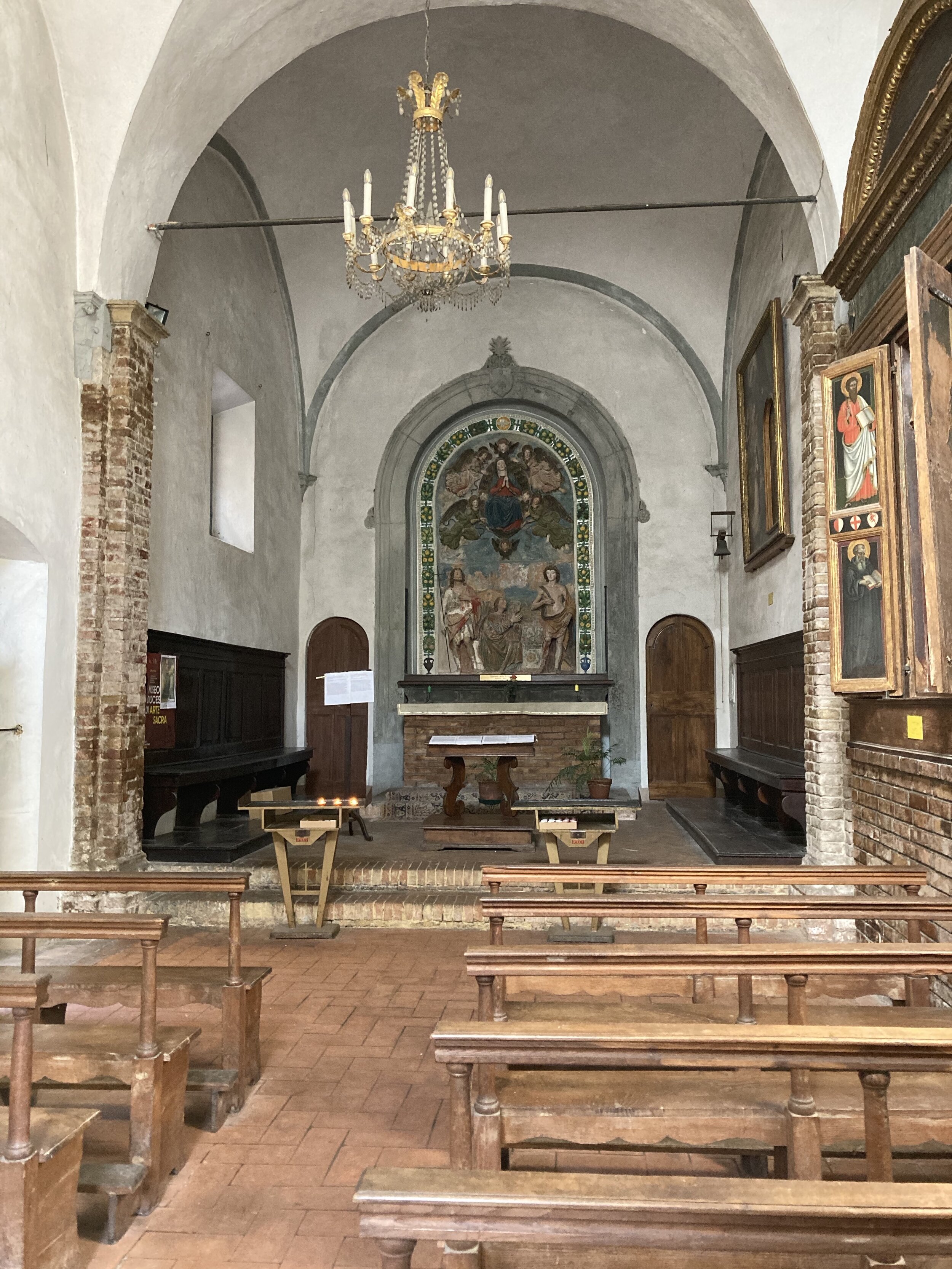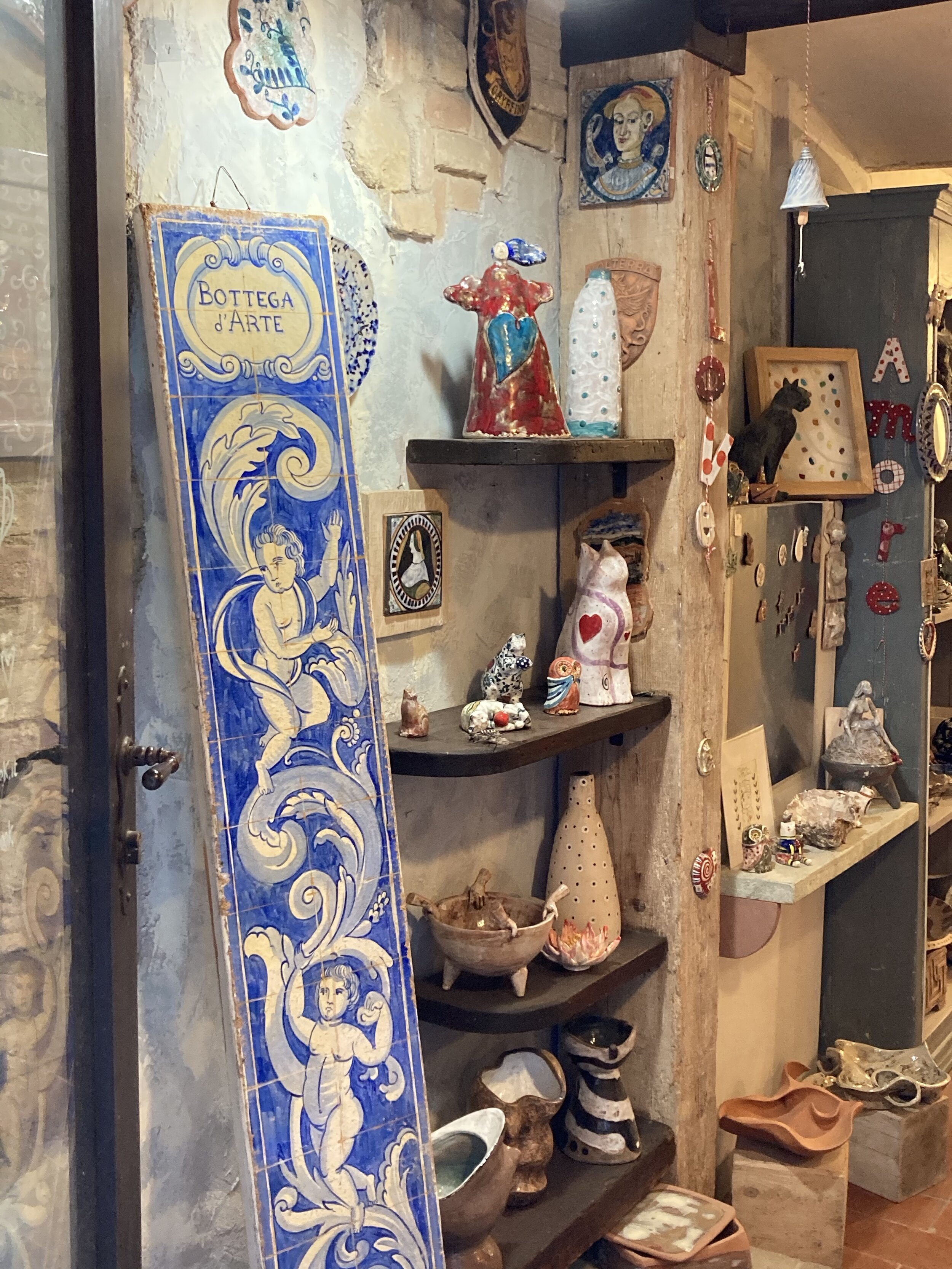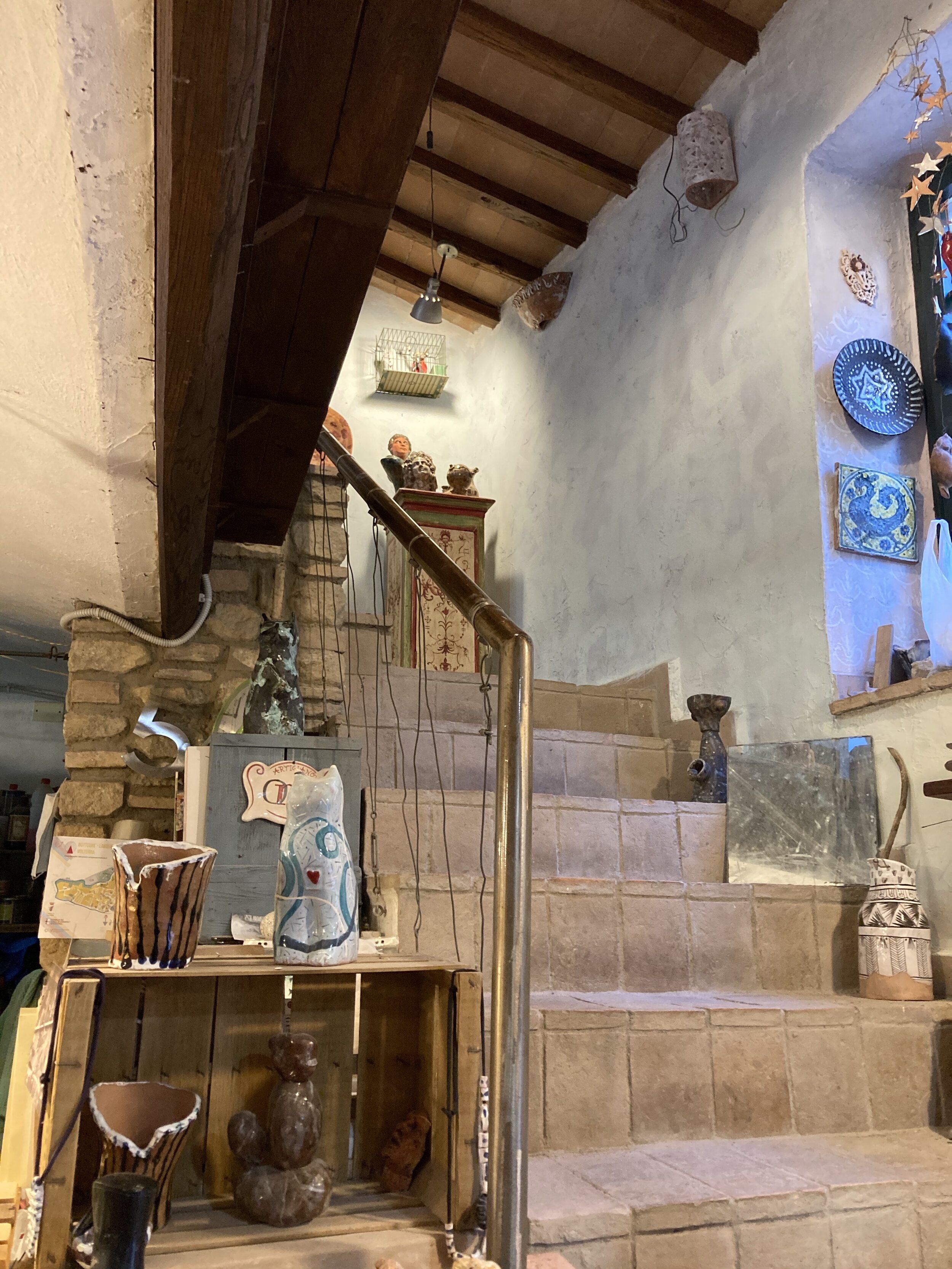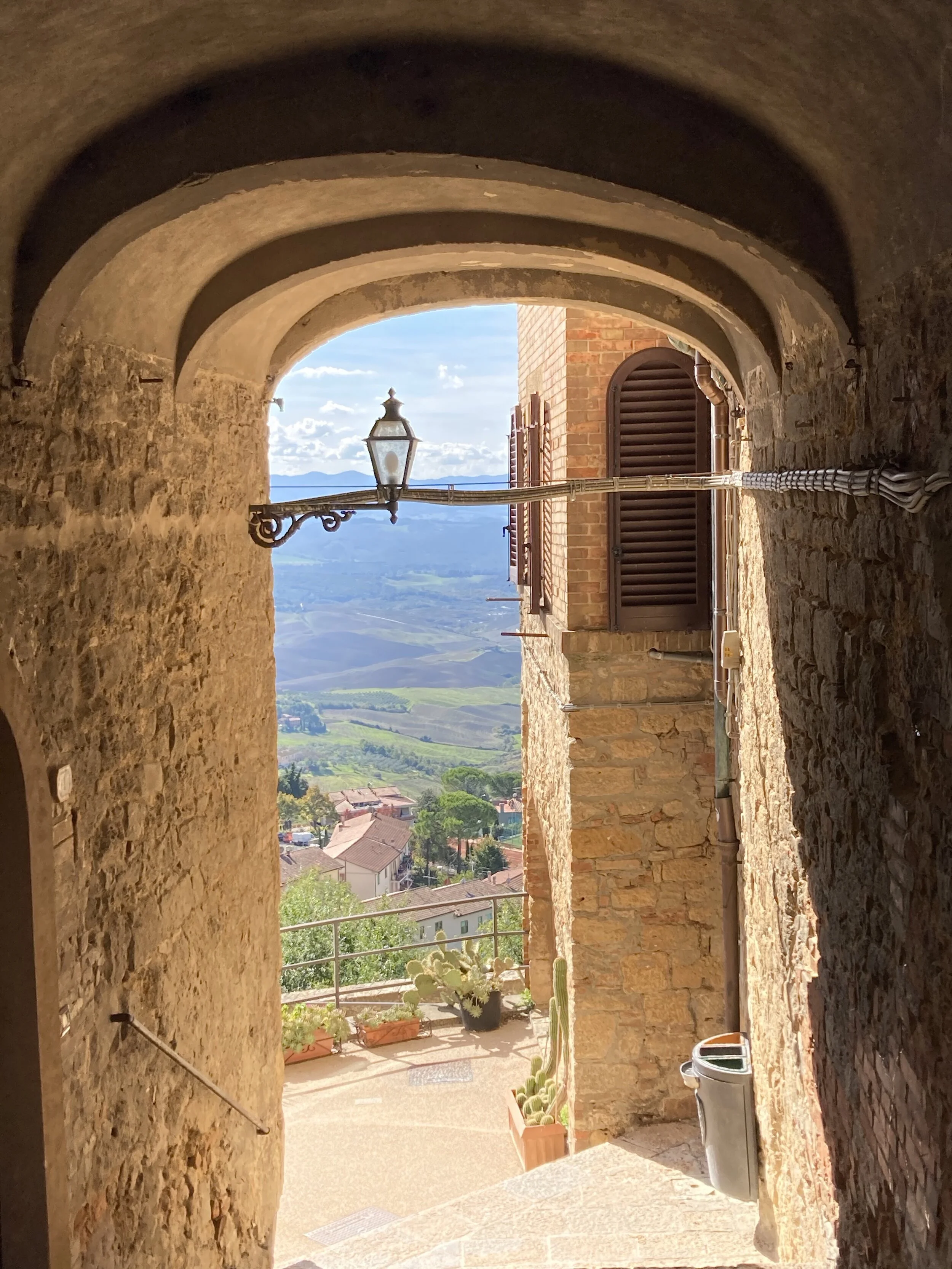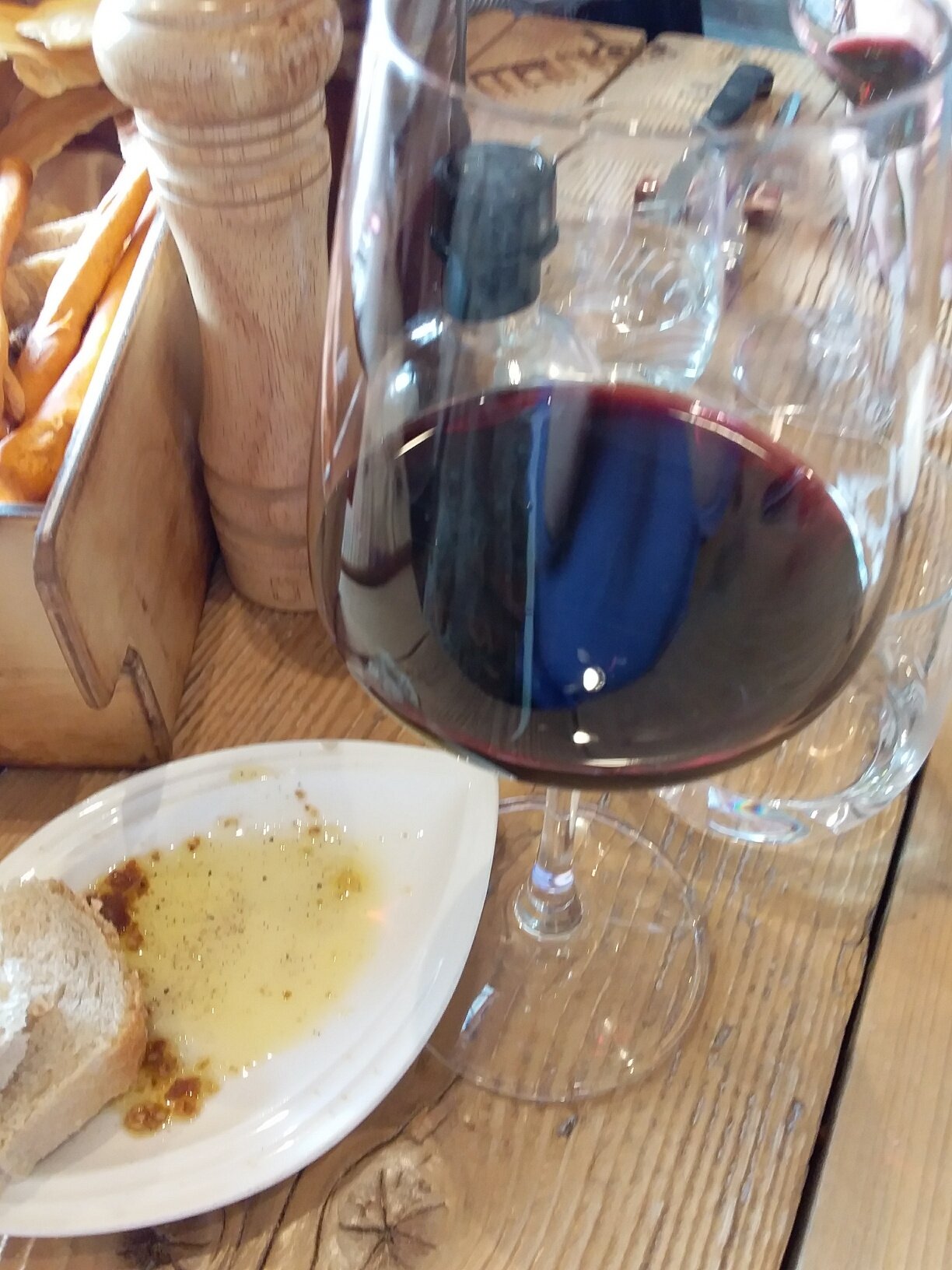One Day in Spello
Spello just may be the perfect Umbrian hill town.
It has layers of history - old Roman gates, ancient city walls, and meandering streetscapes lined with Medieval sandstone houses. Art filled churches stand atop pre-Christian temples.
Small artisan galleries and shops line the streets in the historic center. And the flowers! It seems that every street, window, doorstep, and wall are filled with green plants and flowers. Then there are the views. Situated high on a hill, the vistas are wide, green, and gorgeous. No wonder Spello is included in the list of I Borghi Più Belli d’Italia (The most beautiful villages in Italy).
Two gastronomic things add to Spello’s charm – wine and olive oil. The local wine is Sagrantino, a bold red. The olive oil is also bold – a stronger, spicier variety than the Tuscan oils I am used to. Made from Moraiolo olives, the flavor was wonderful. I had a chance to sample both during lunch at Enoteca Properzio, a great place for tasting both the wines and olive oils with lots of info provided by the staff. Thanks to J. Gorwoda for some of the photos below. I was so busy enjoying my pasta that I forgot to snap any other photos at the restaurant.
With only 1 day to spend in Spello during a week exploring Umbria, I didn’t have a chance to fully explore all that the city has to offer. The highlights of the day included:
Wandering the steep and winding Medieval streets. Spello is full of twisting alleys, courtyards, and squares. One alley, the Vicolo dei Baci, must see lots of kissing couples. The architecture throughout town is lovely, and everywhere there are flowers.
The Baglioni Chapel in the Church of Santa Maria Maggiore. The interior of the chapel is stunning and filled with frescoes by Pinturicchio. One problem – no photographs are allowed. It took all my willpower to leave my camera in my purse. The photos below are from the web. Best to see it in person!
Just outside the Baglioni chapel is a small garden, Giardiano Hortus. A graceful gate marks the entrance; a series of brick arches the perimeter. It’s a quiet, simple space that made for a perfect break in the afternoon. Also fun watching this little boy picking a wild flower for his mom.
One thing I did not get to see during my visit was Spello’s famous Infiorata, the festival of flowers that marks the feast of Corpus Domini (Body of Christ). Many towns have infiorate on this day, but Spello’s is one of the most famous. For the festival, the streets are carpeted with elaborate designs made of flowers. Teams plan their designs for months and work through the preceding night to create the displays. The date changes from year to year, generally held on the 9th Sunday after Easter. This year it was on June 21-22, in 2026 it should fall earlier in June, the 6 – 7th. I hope to be there to experience the Infiorata and to explore Spello in greater depth. There is so much more to see.
Street art in Spello proclaims that happiness is contagious. I agree!
